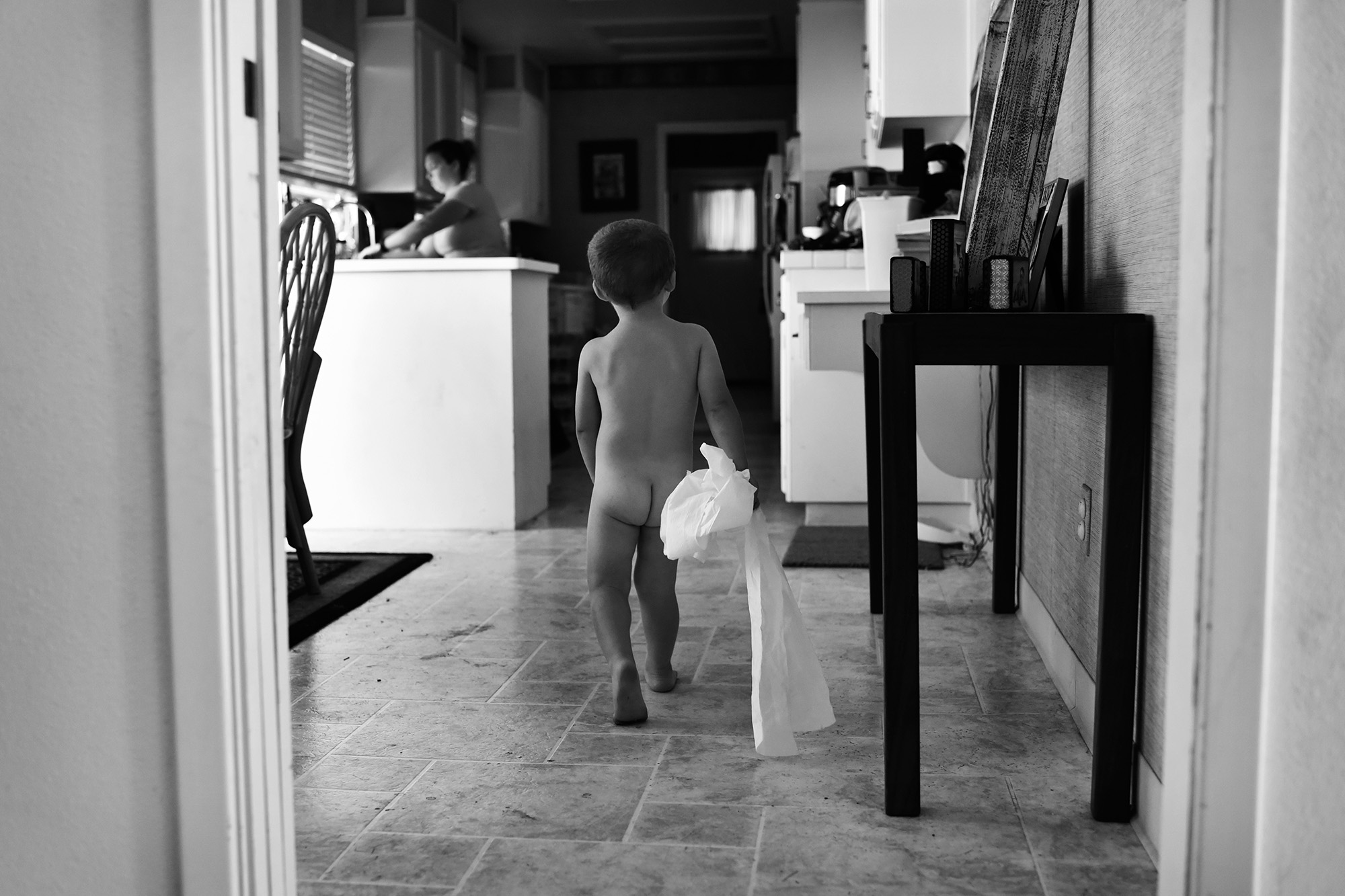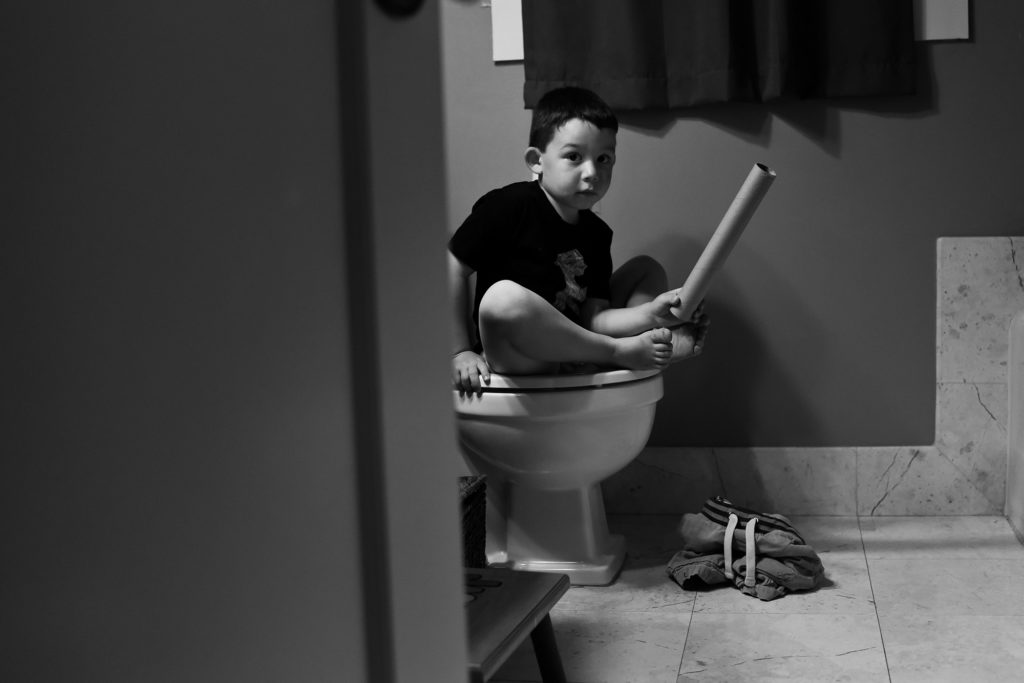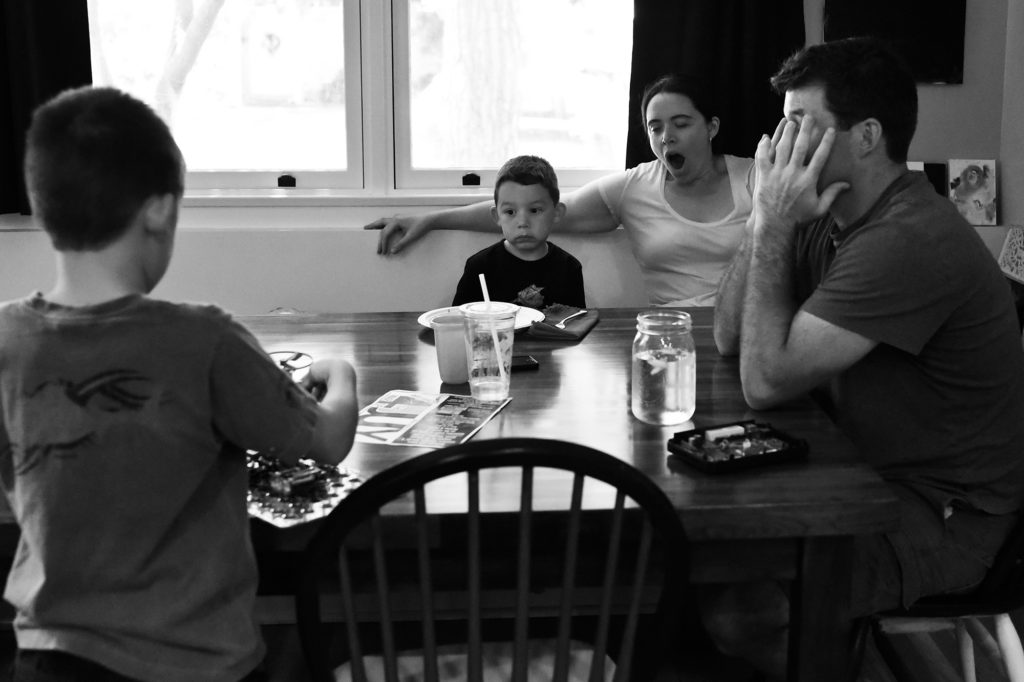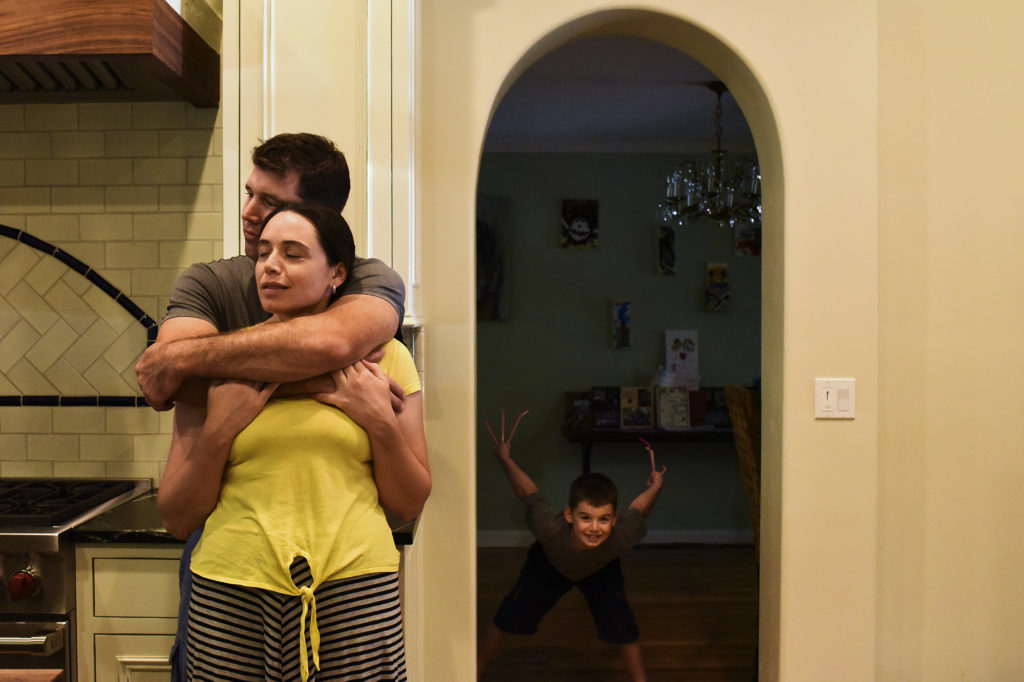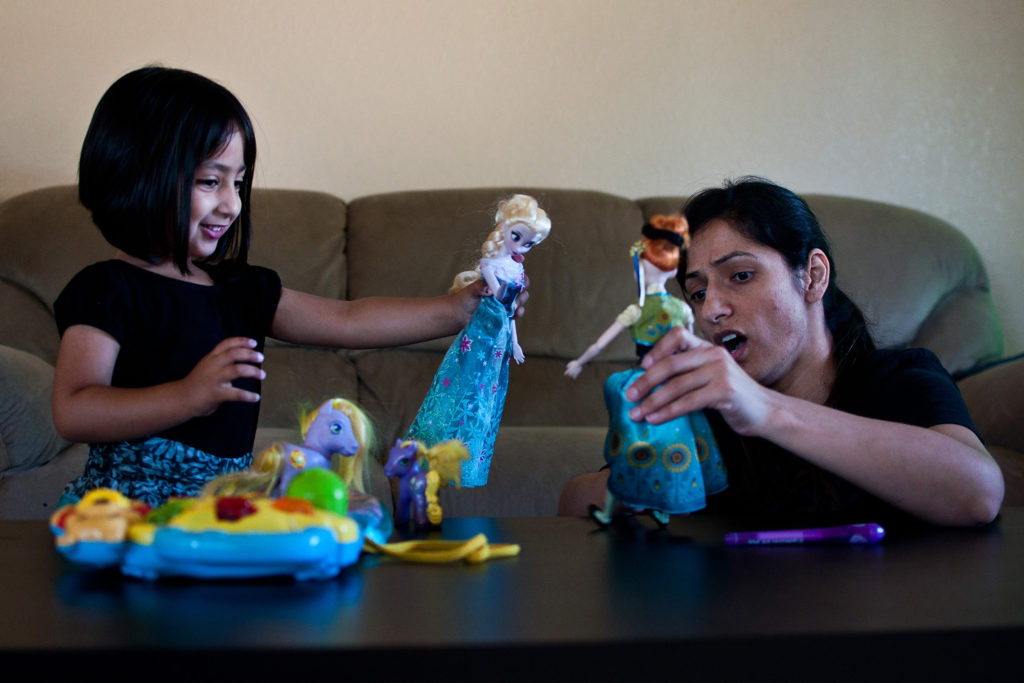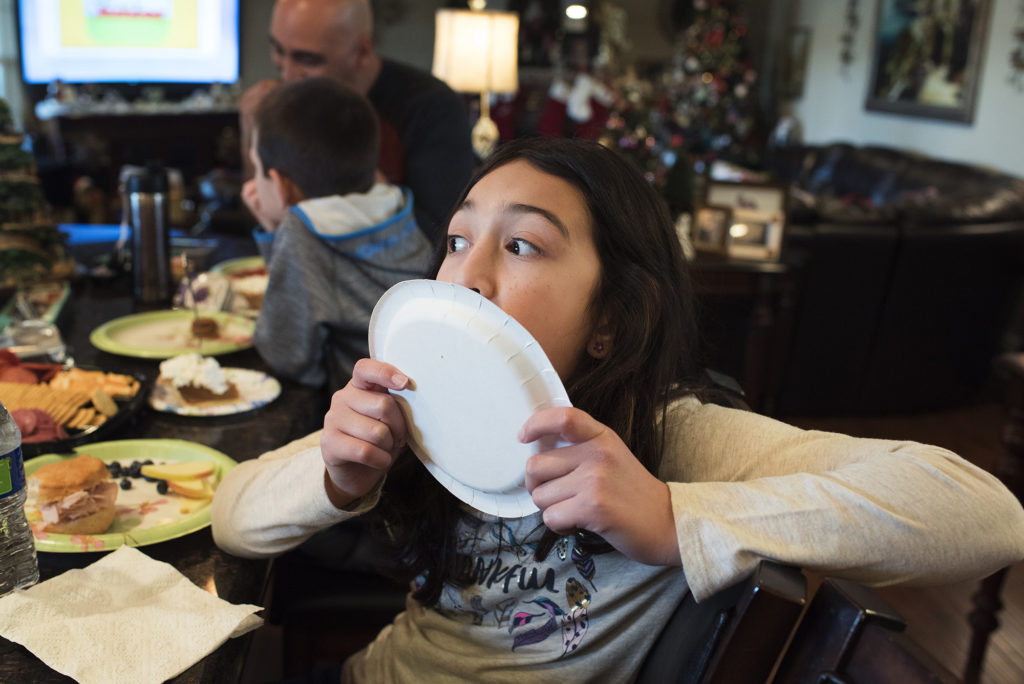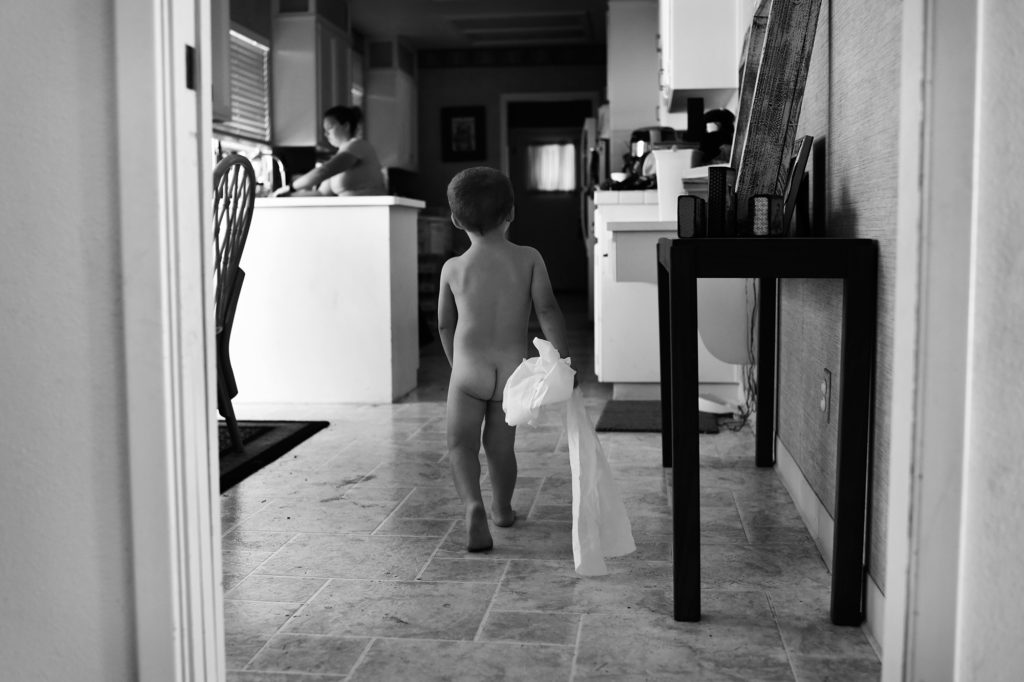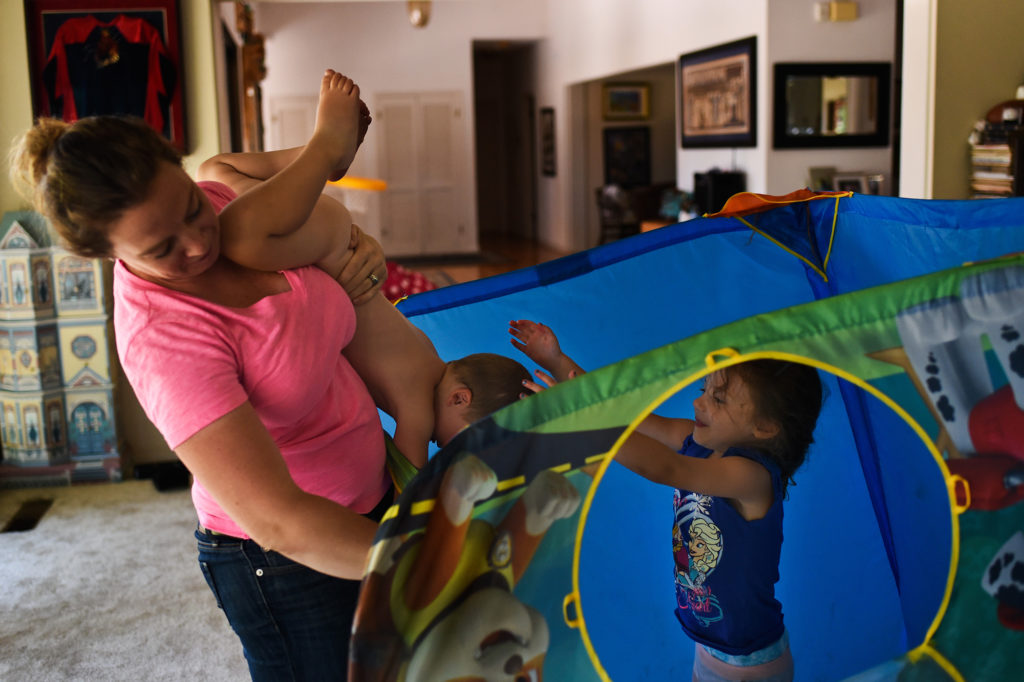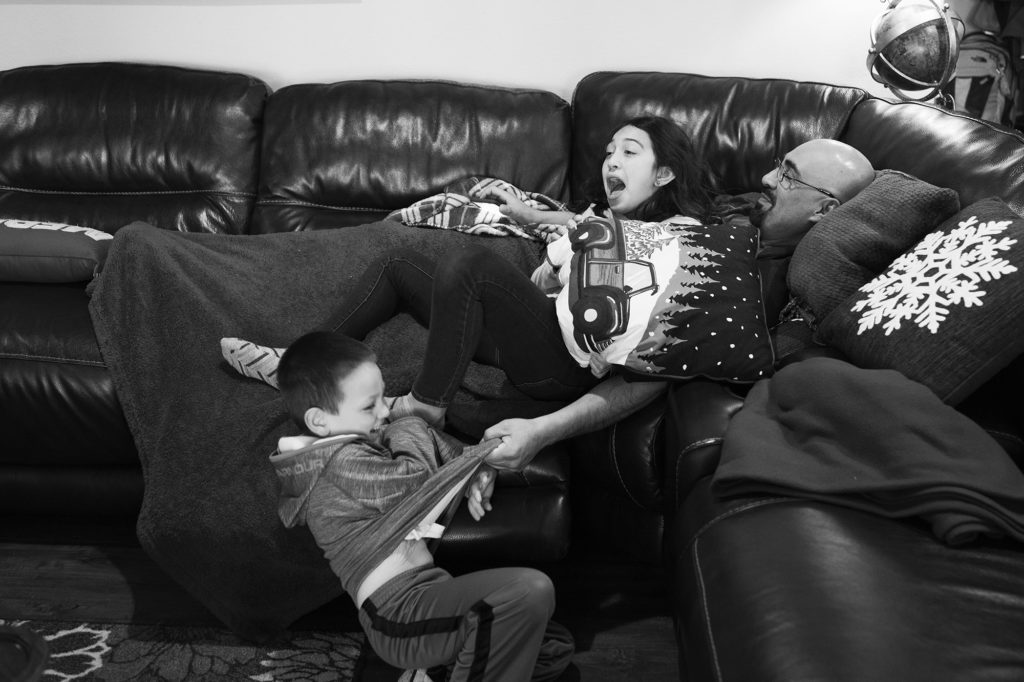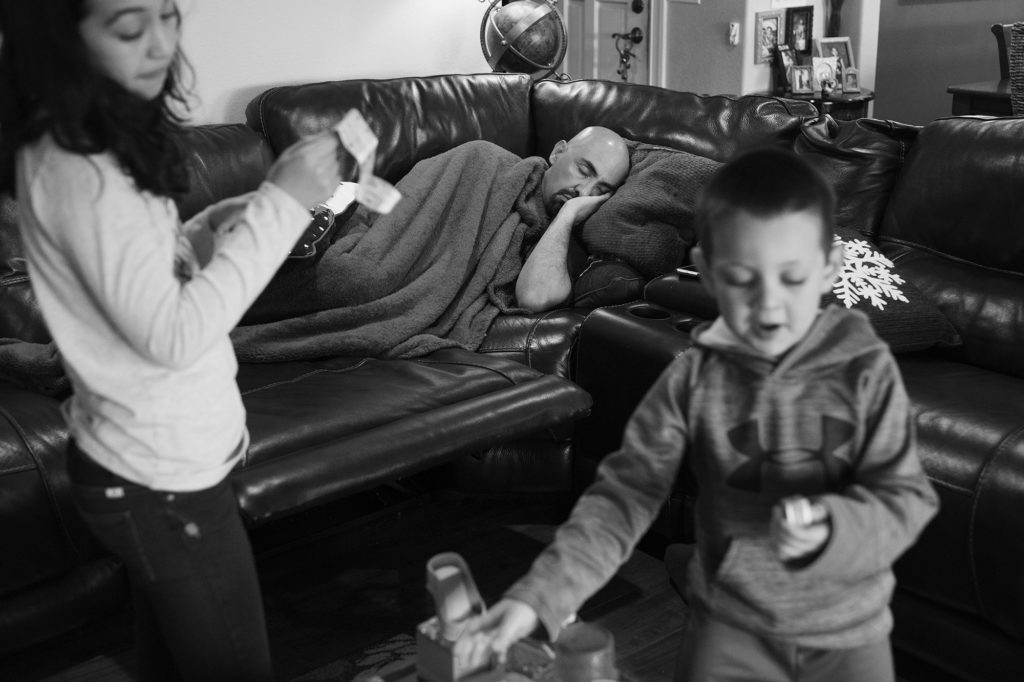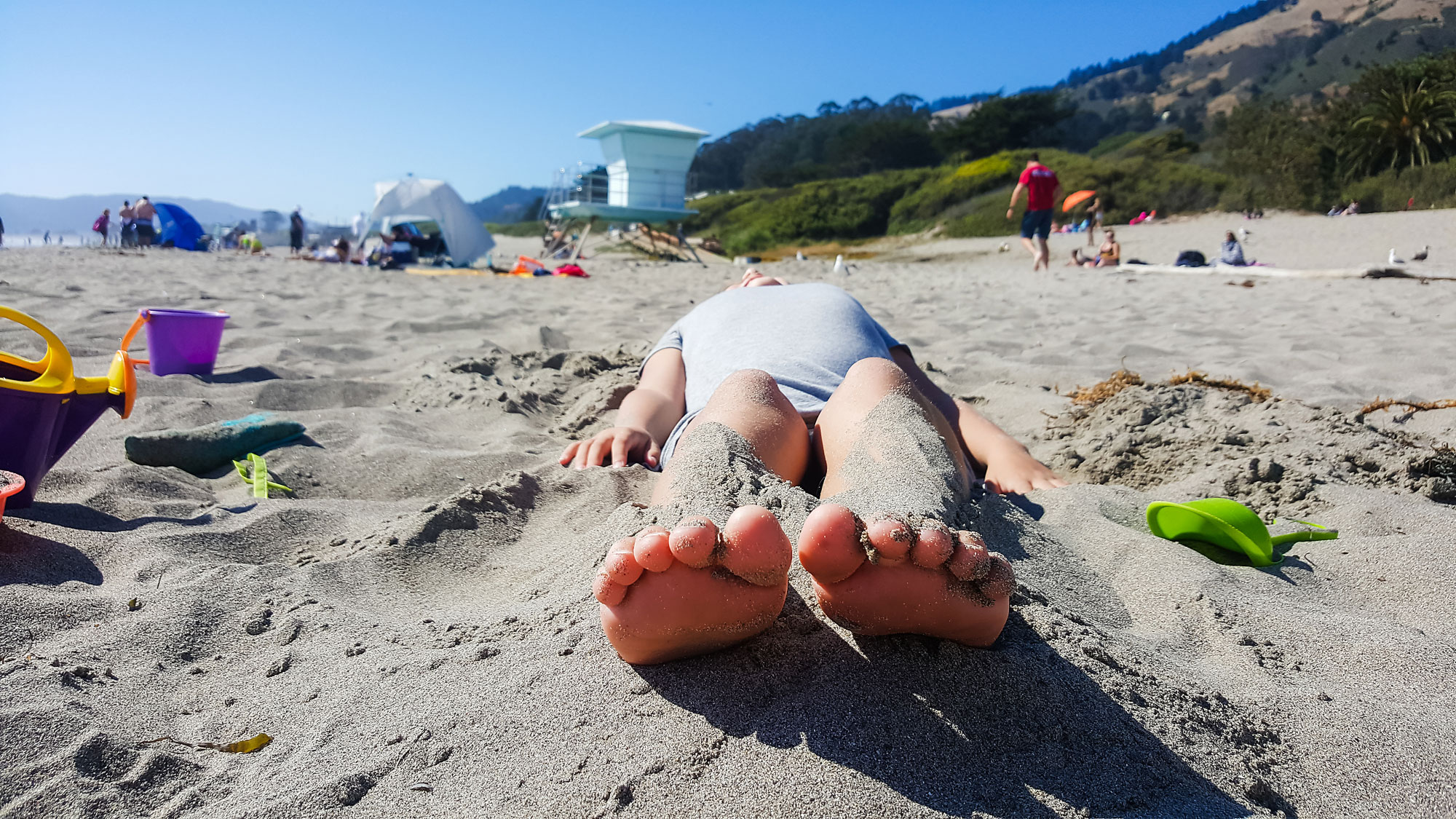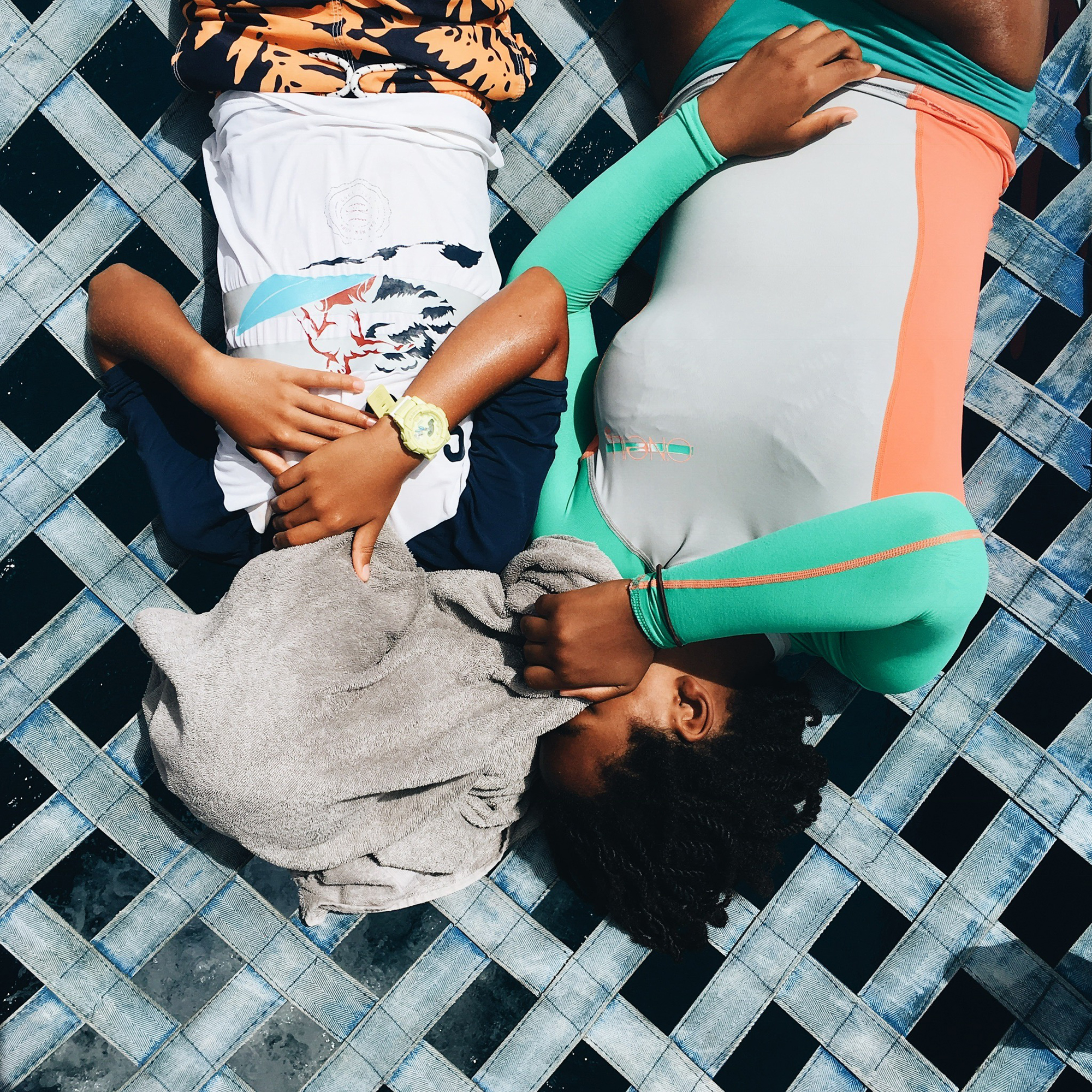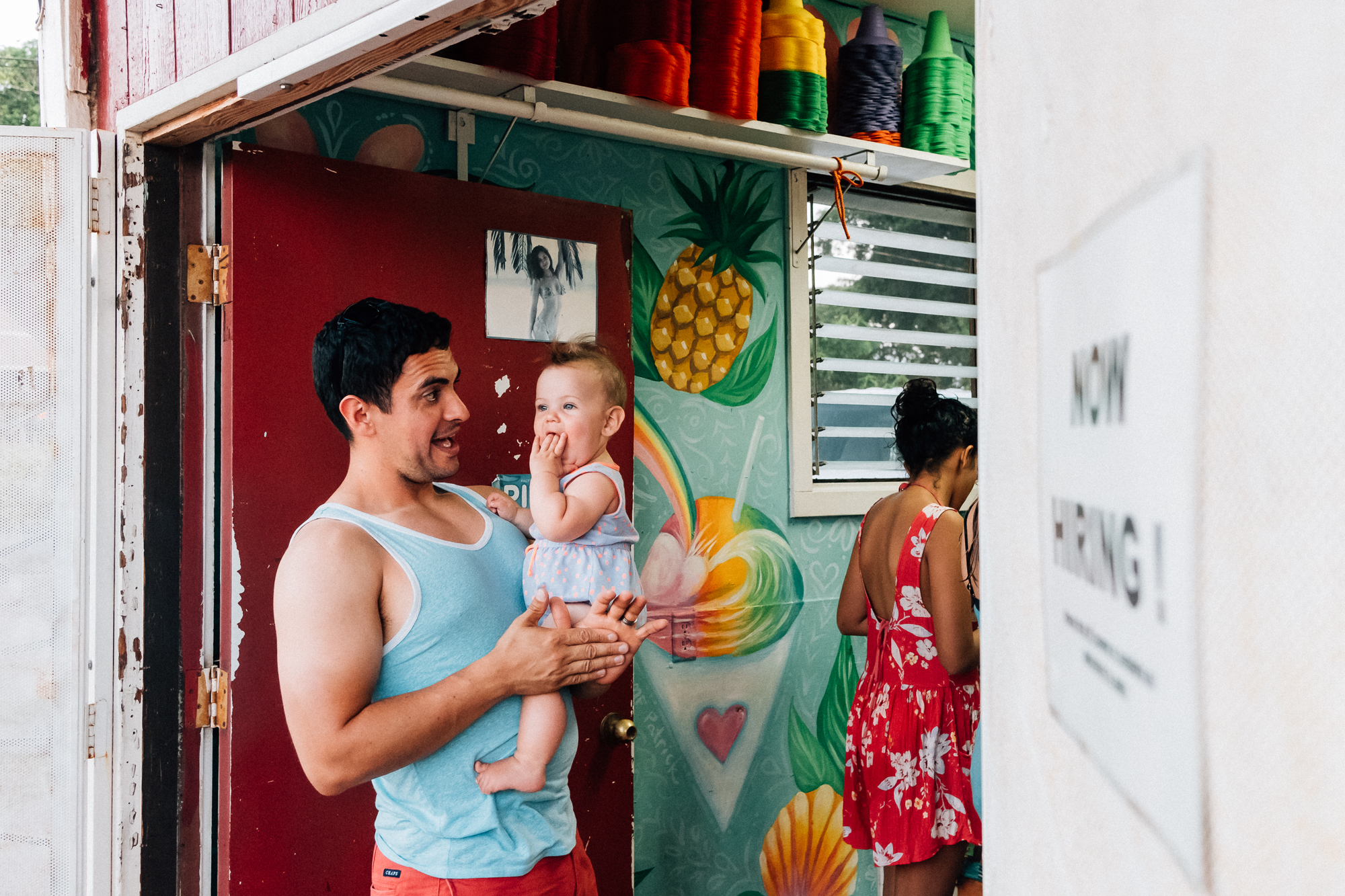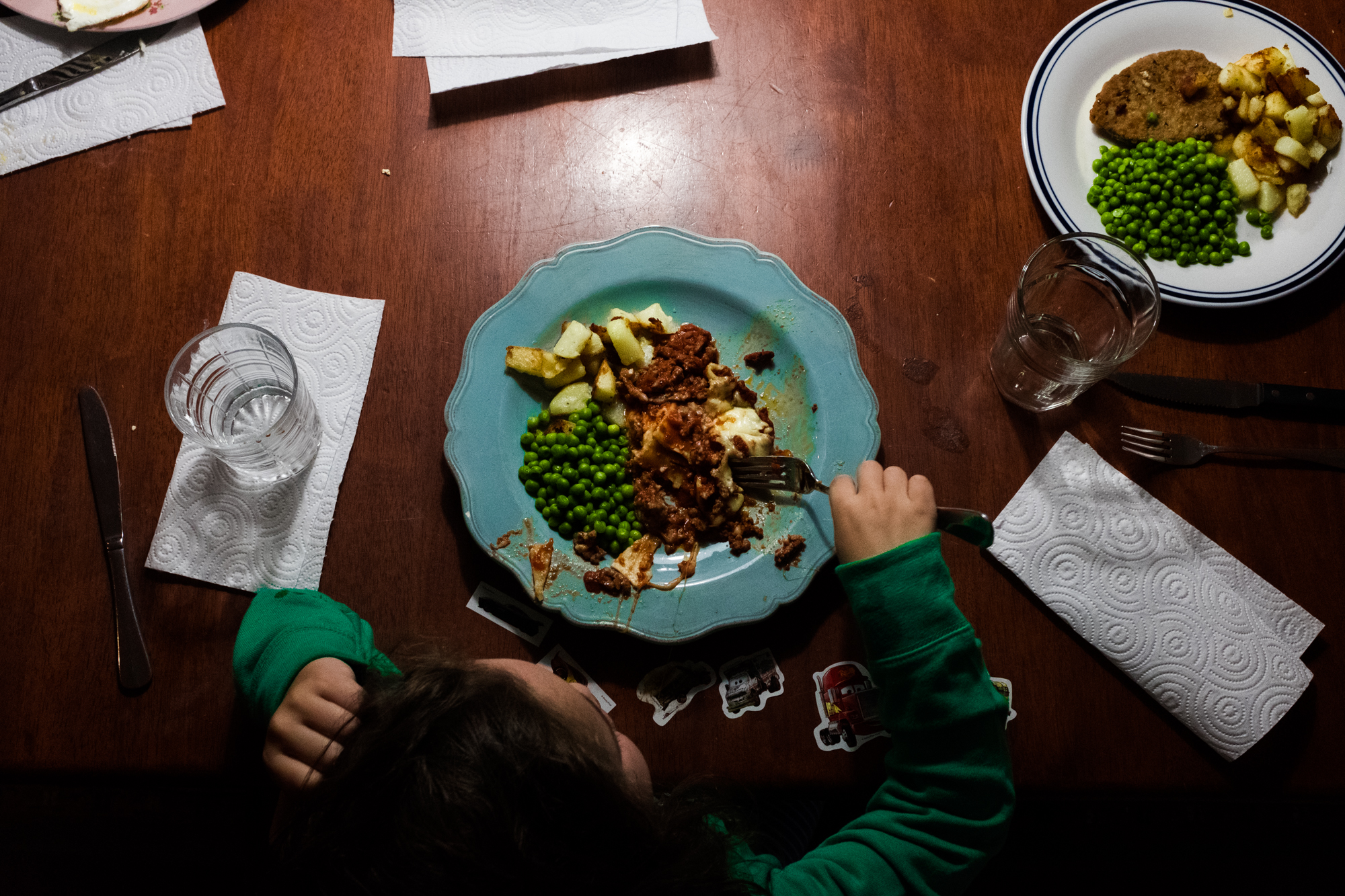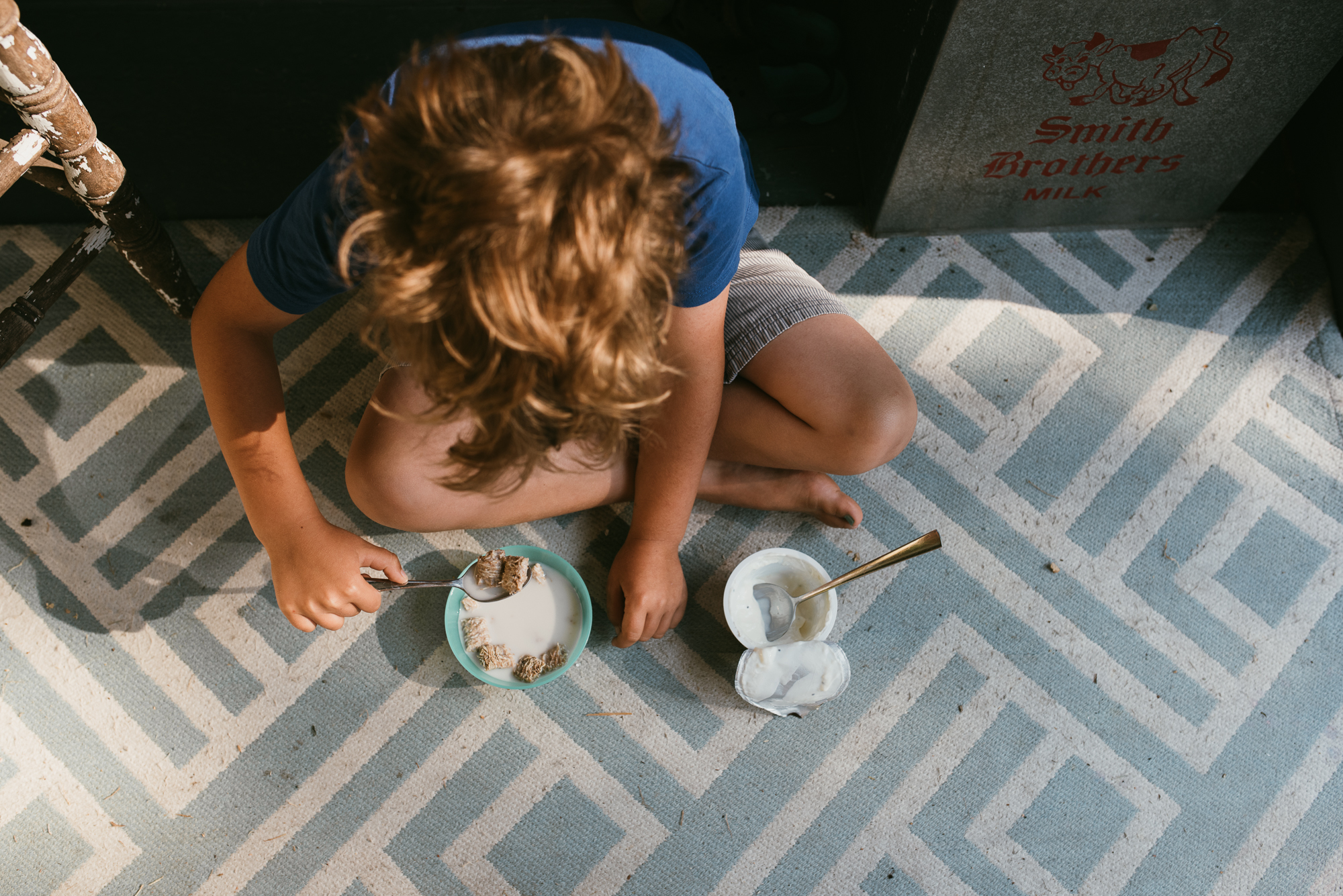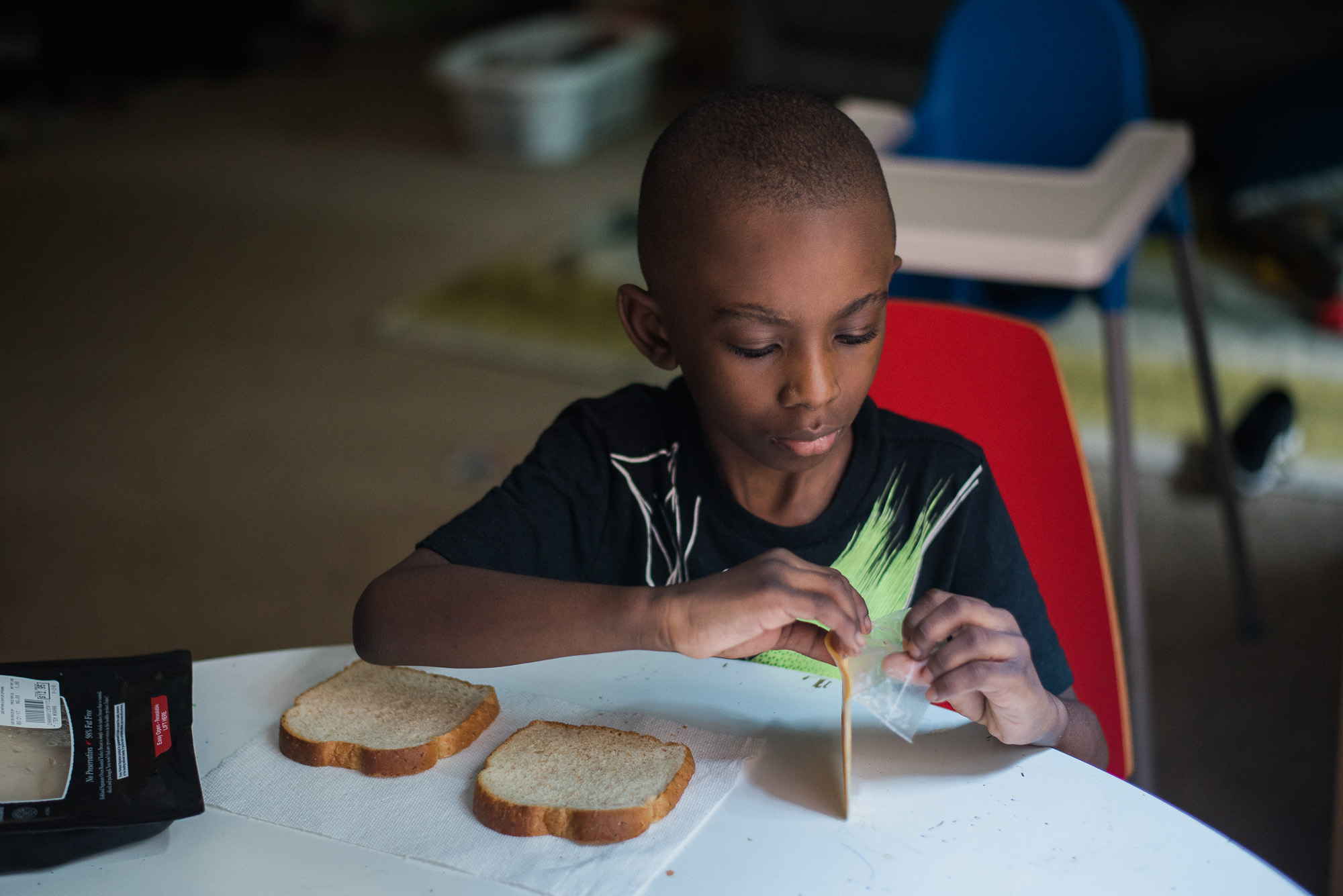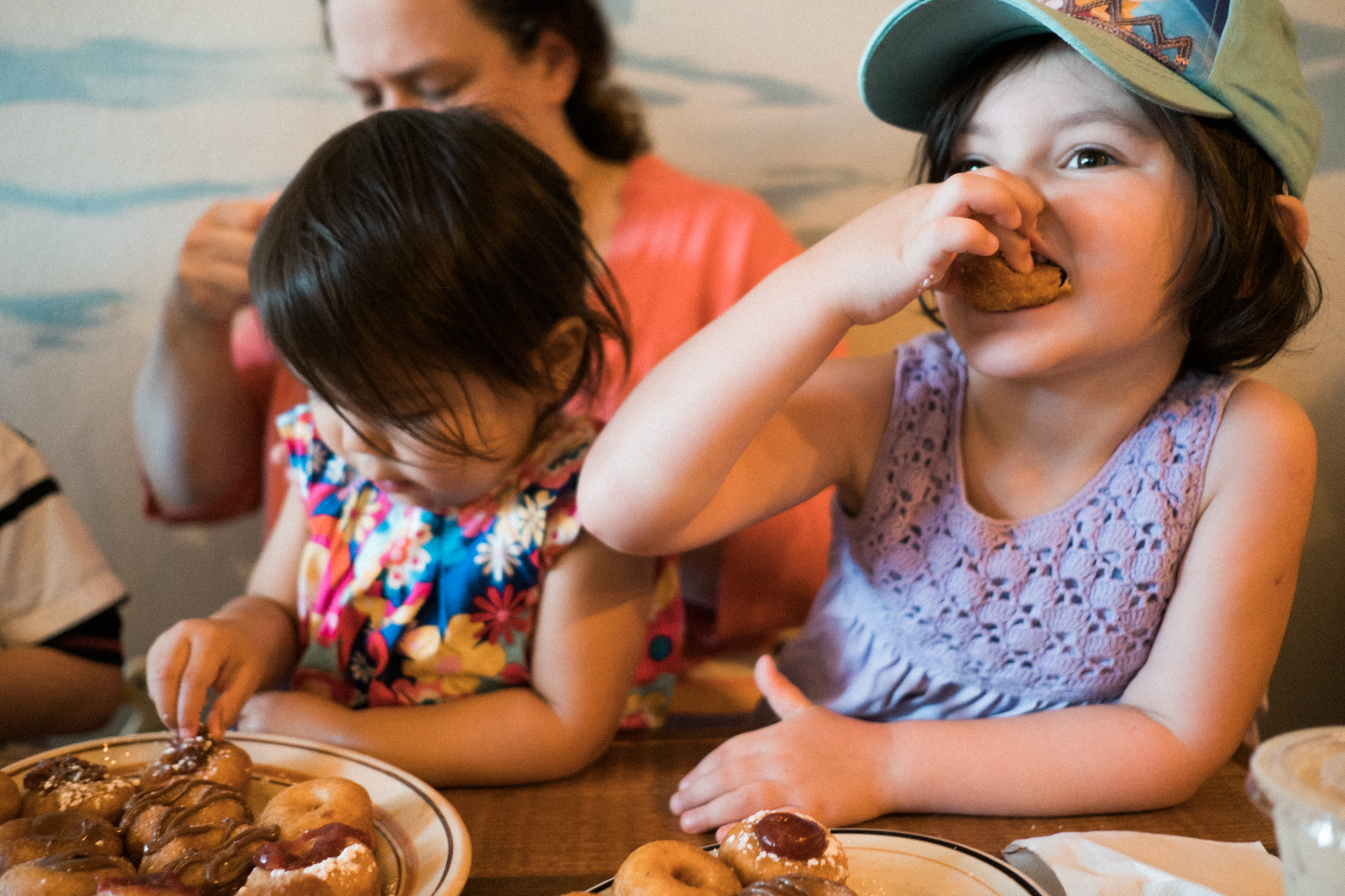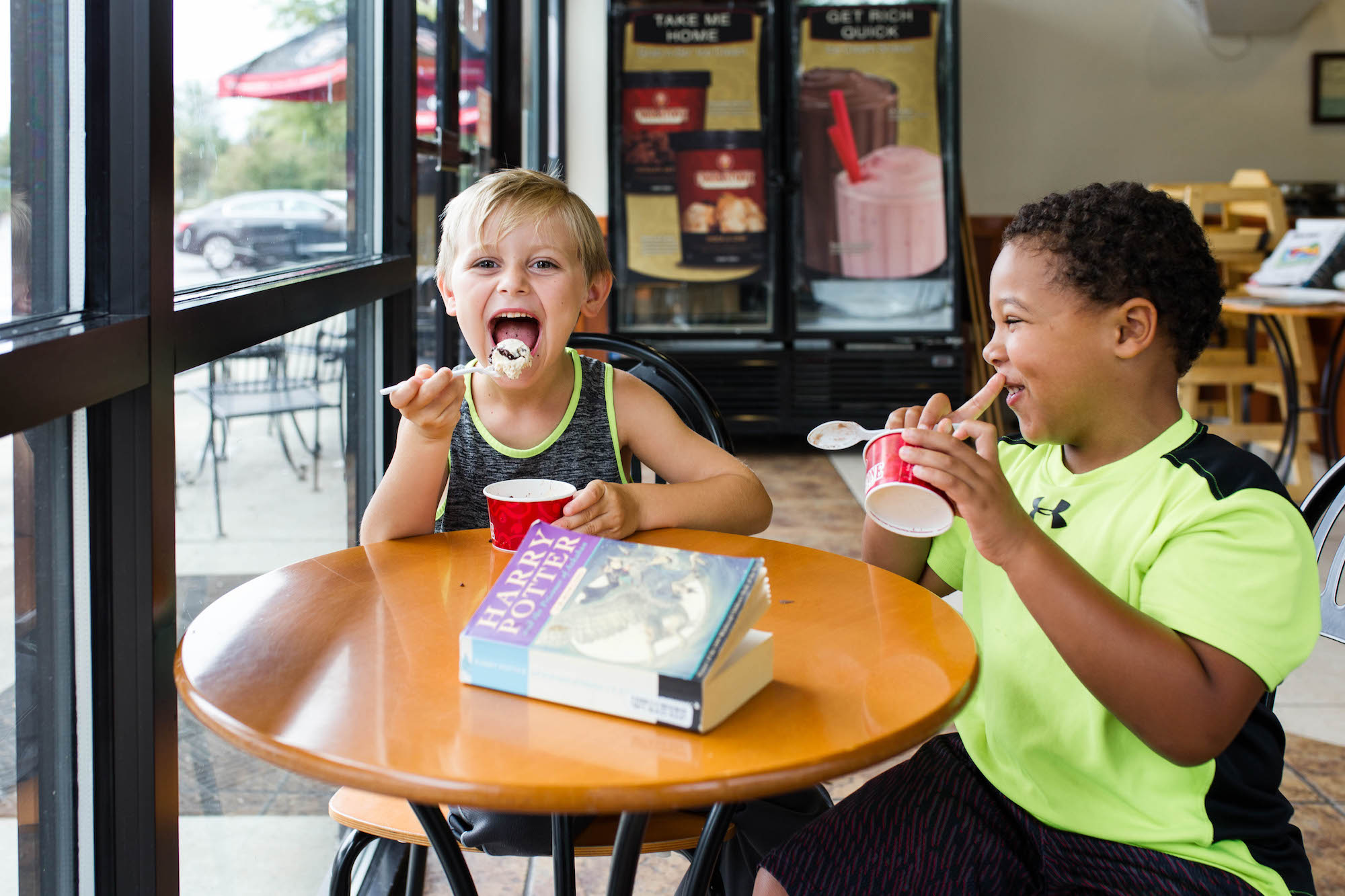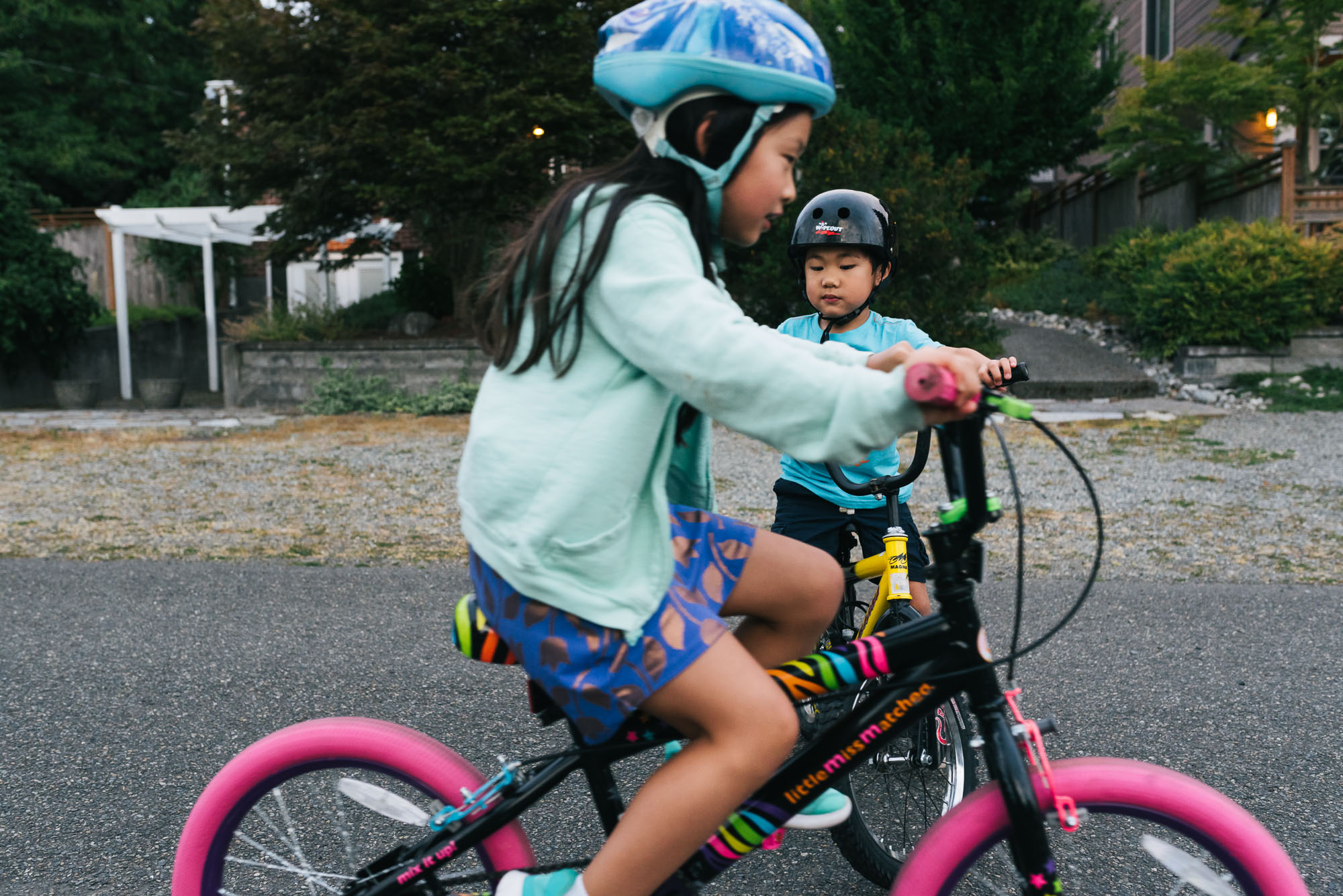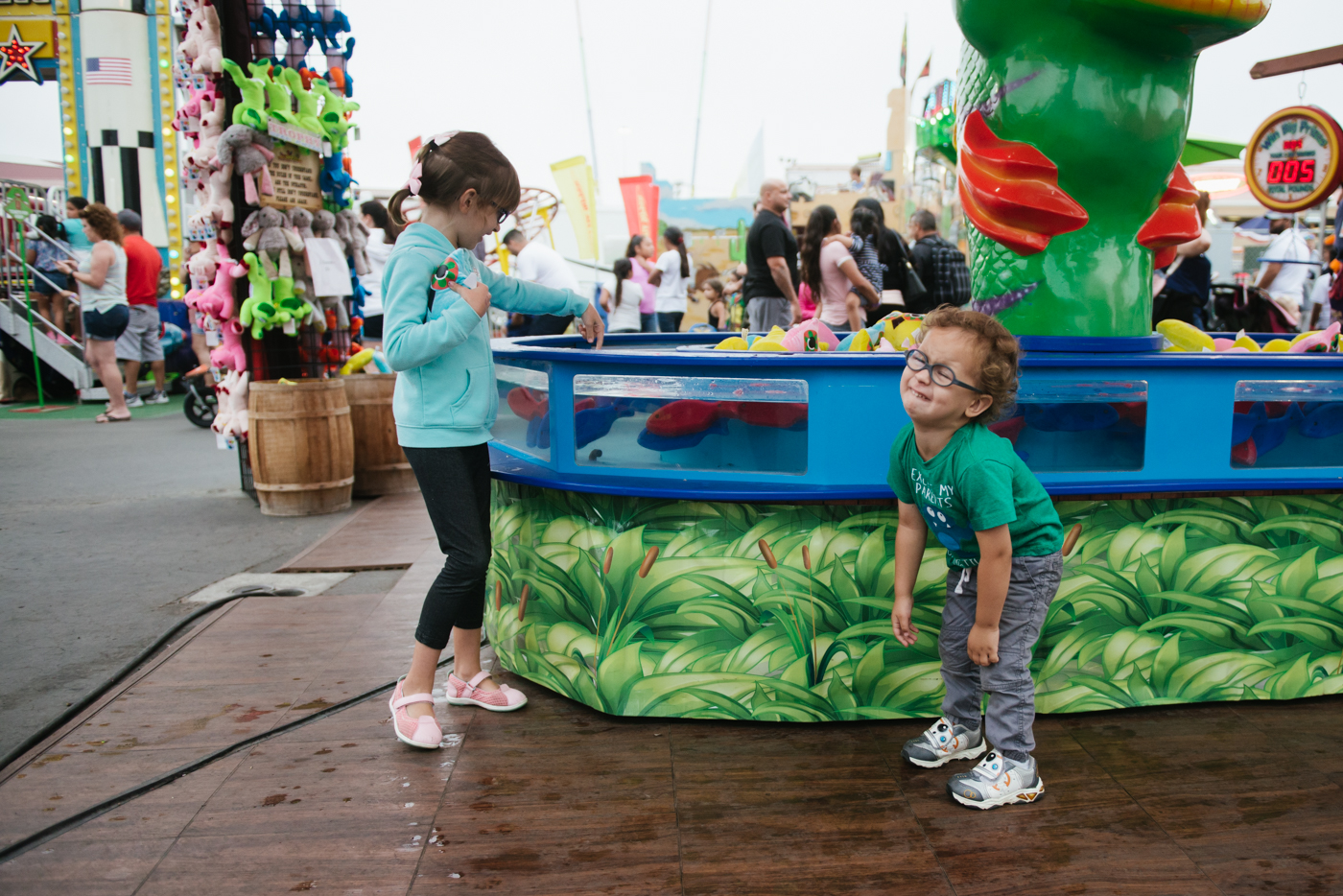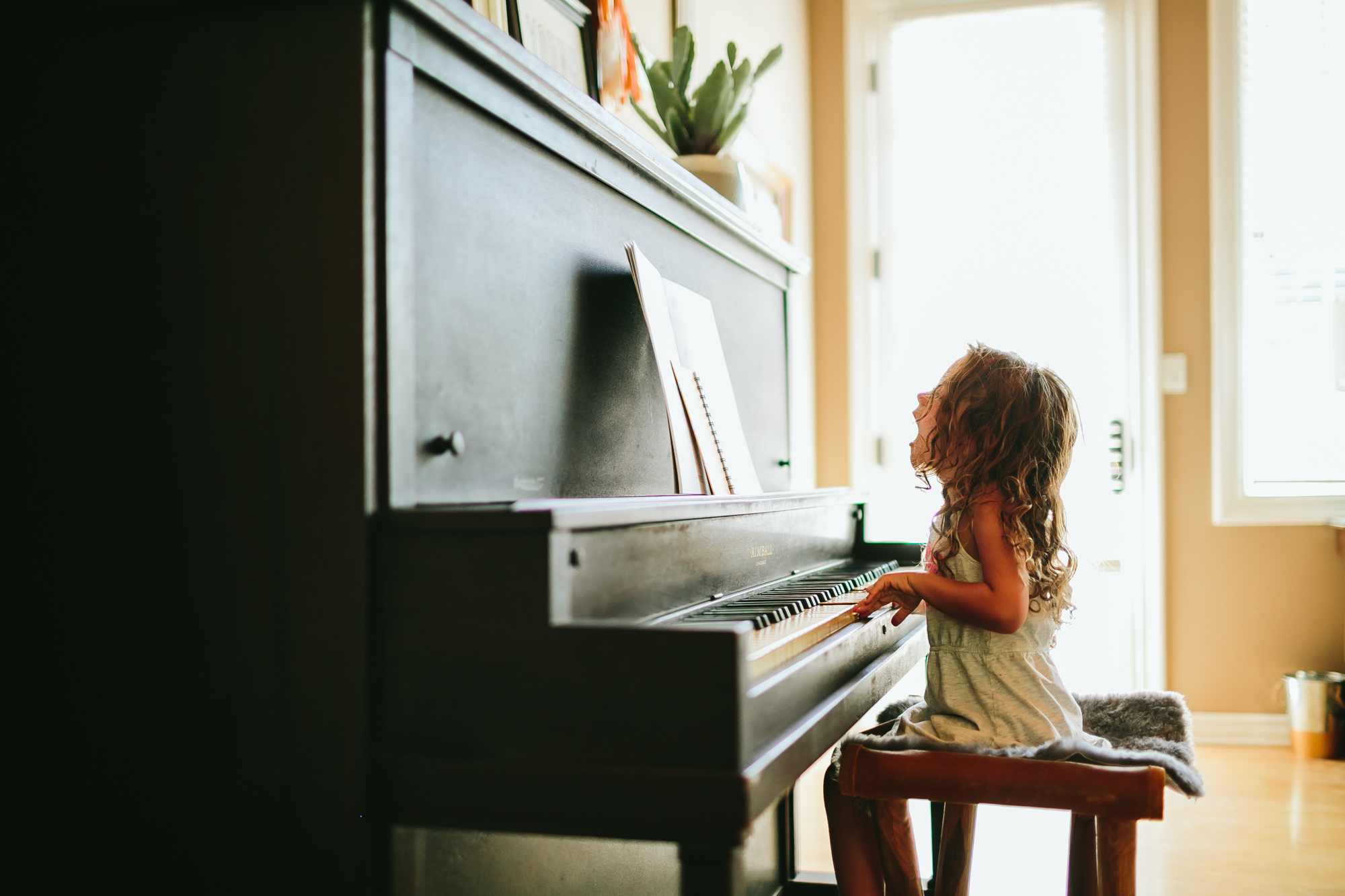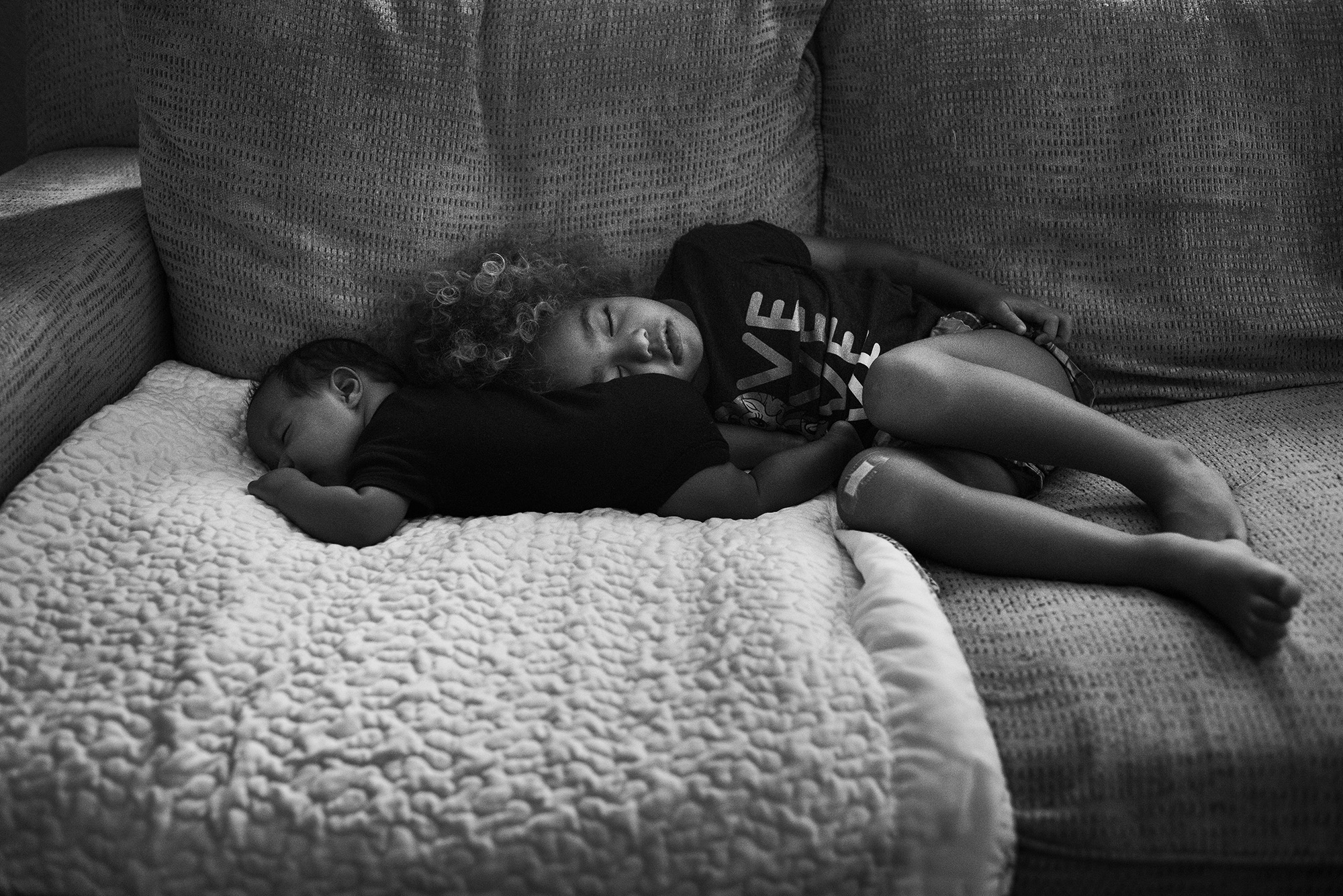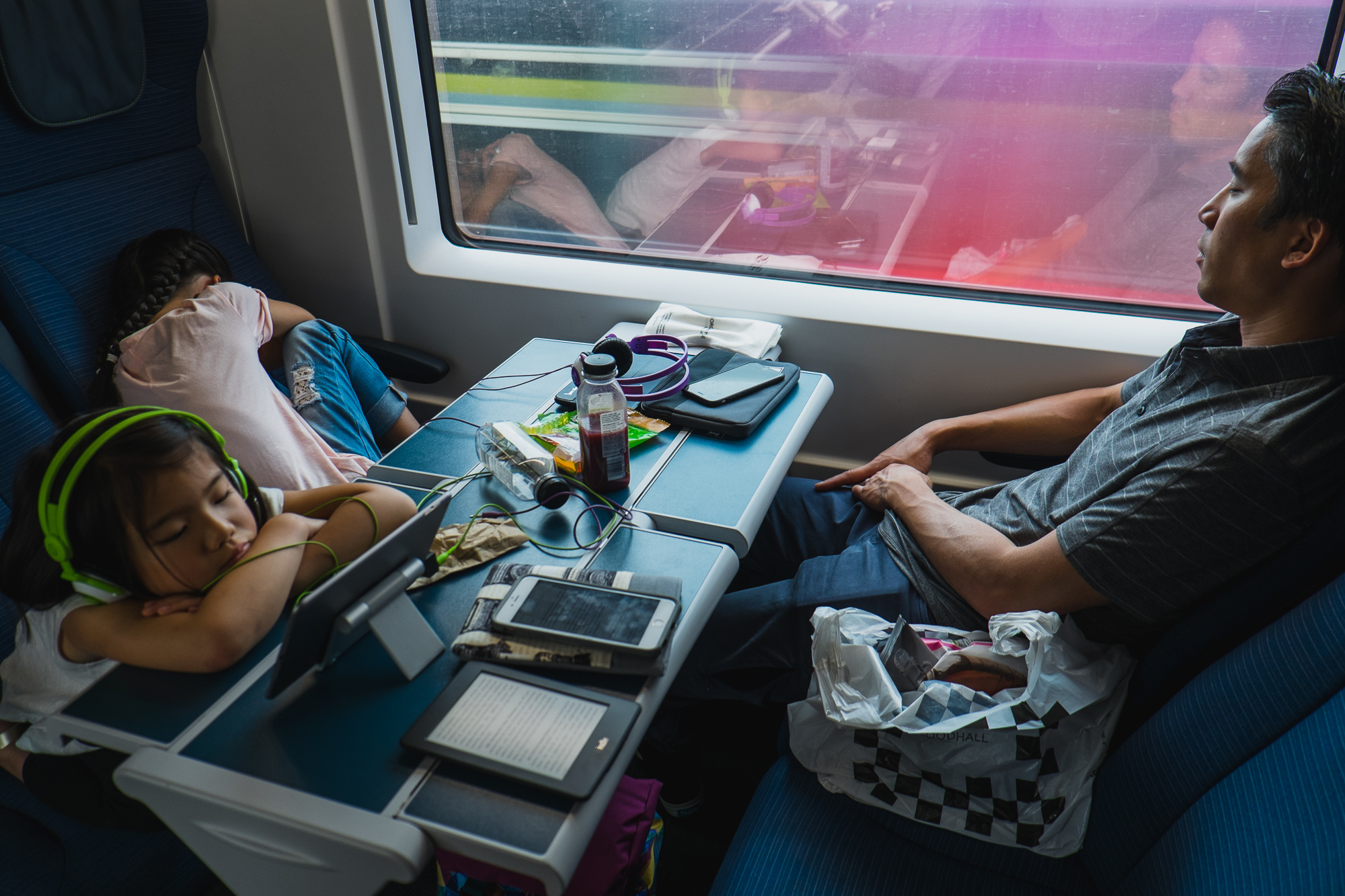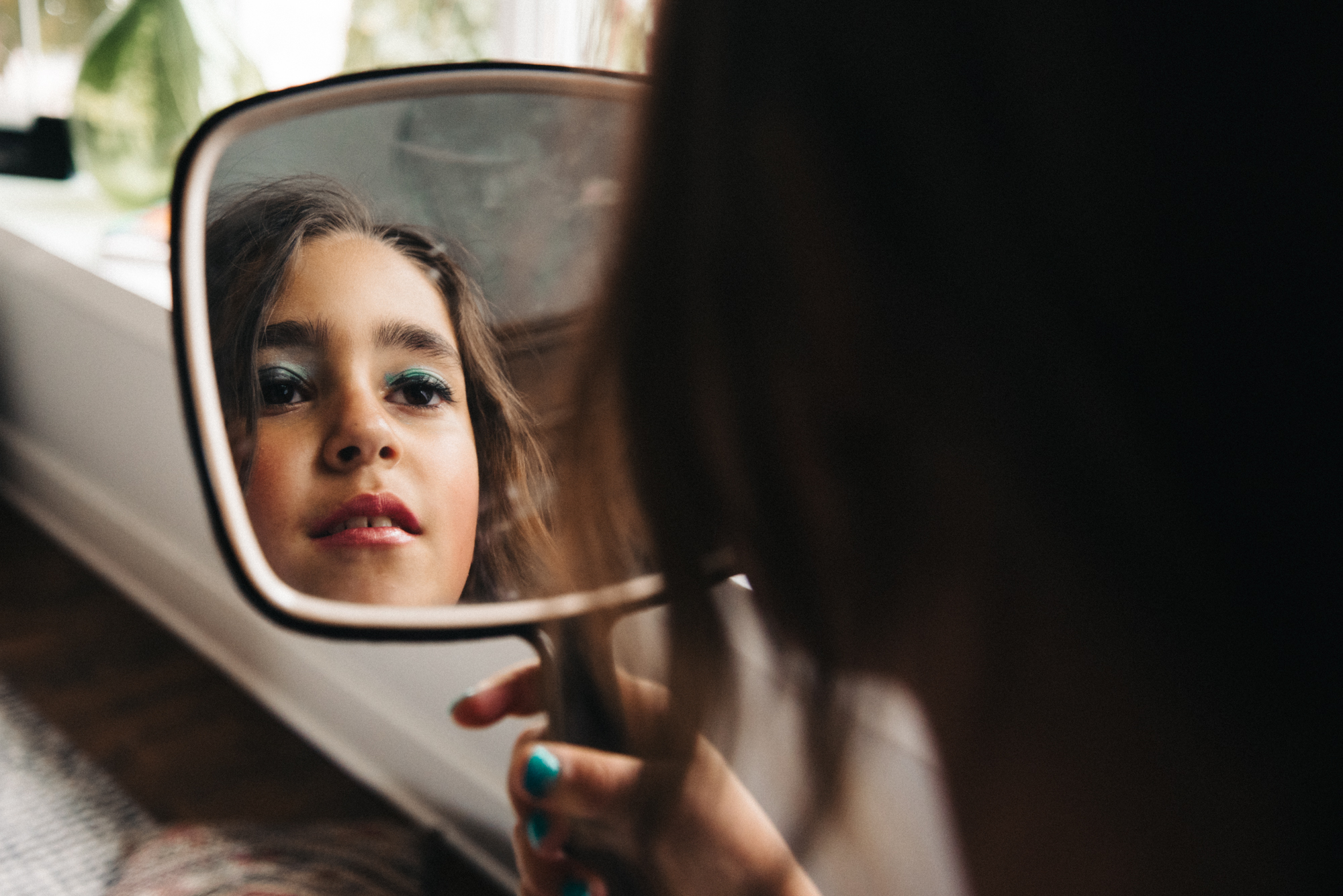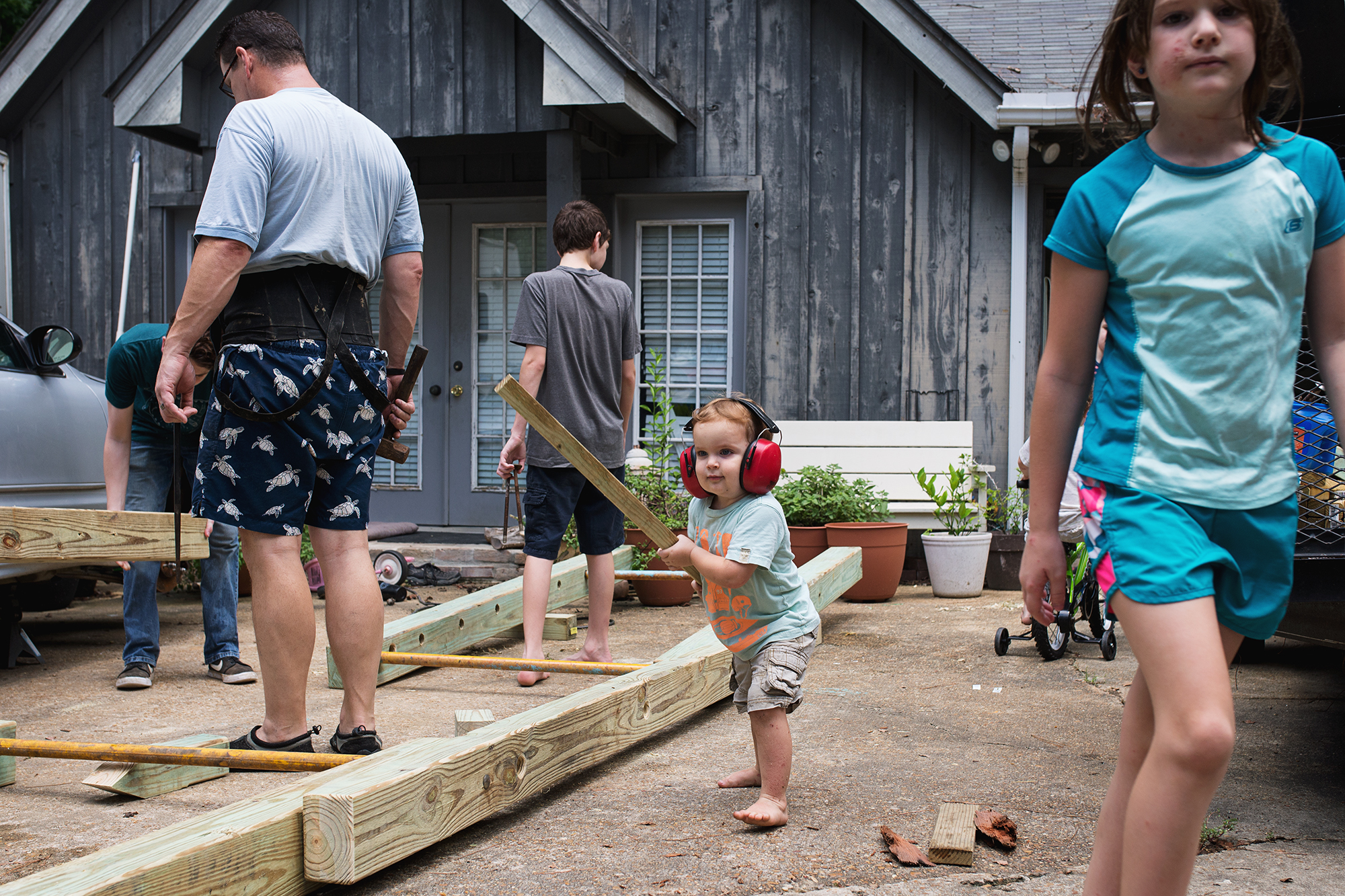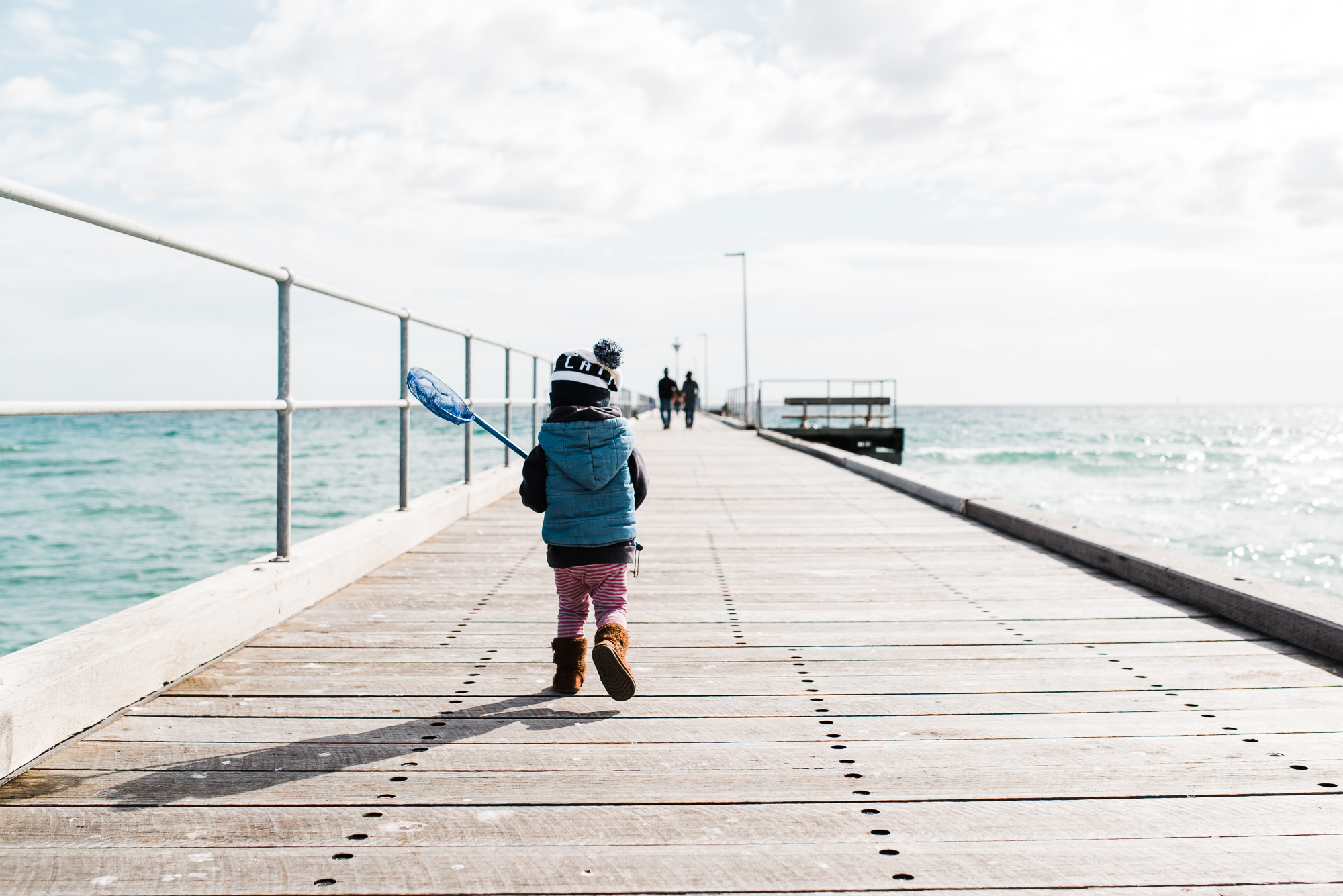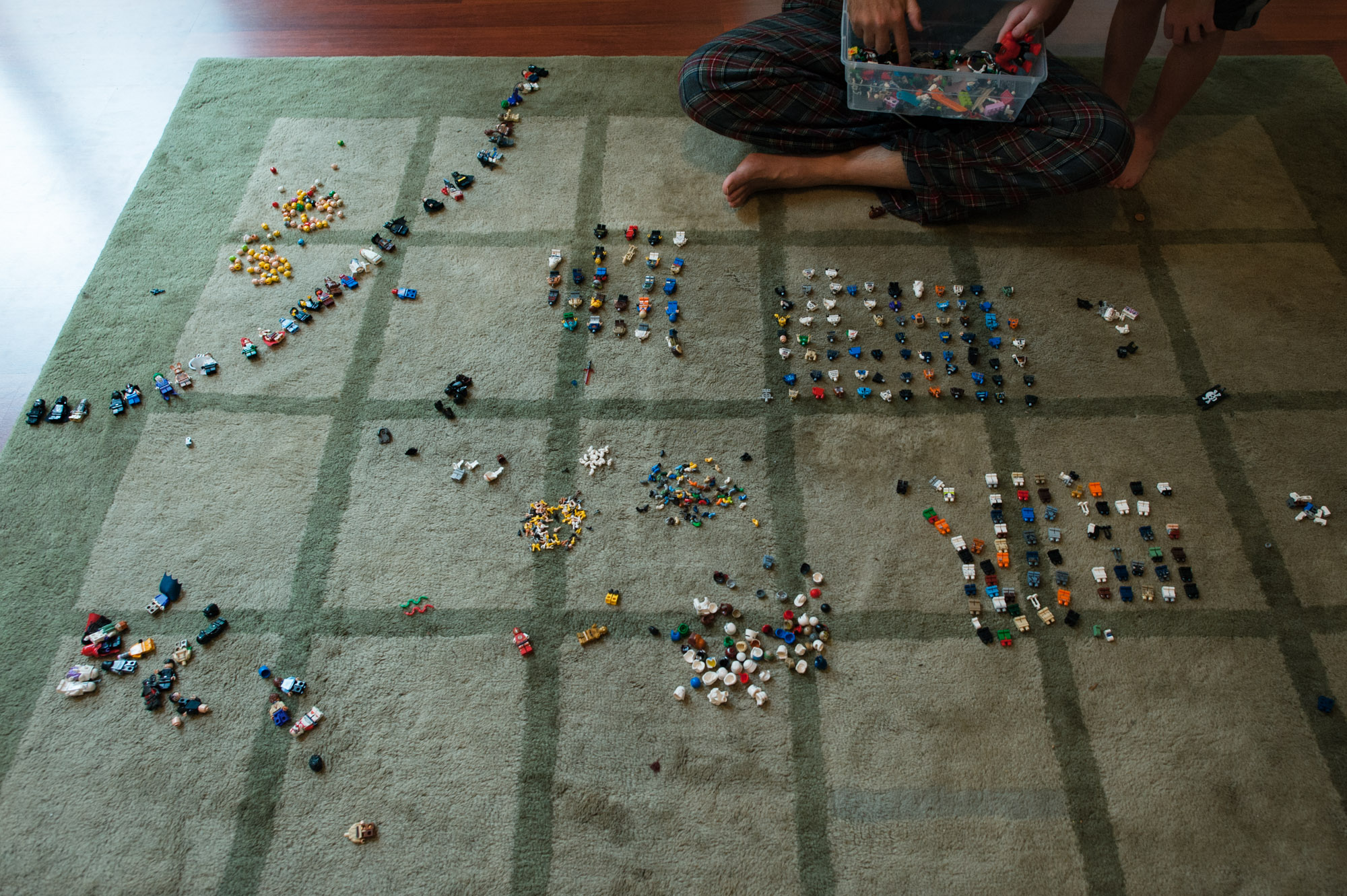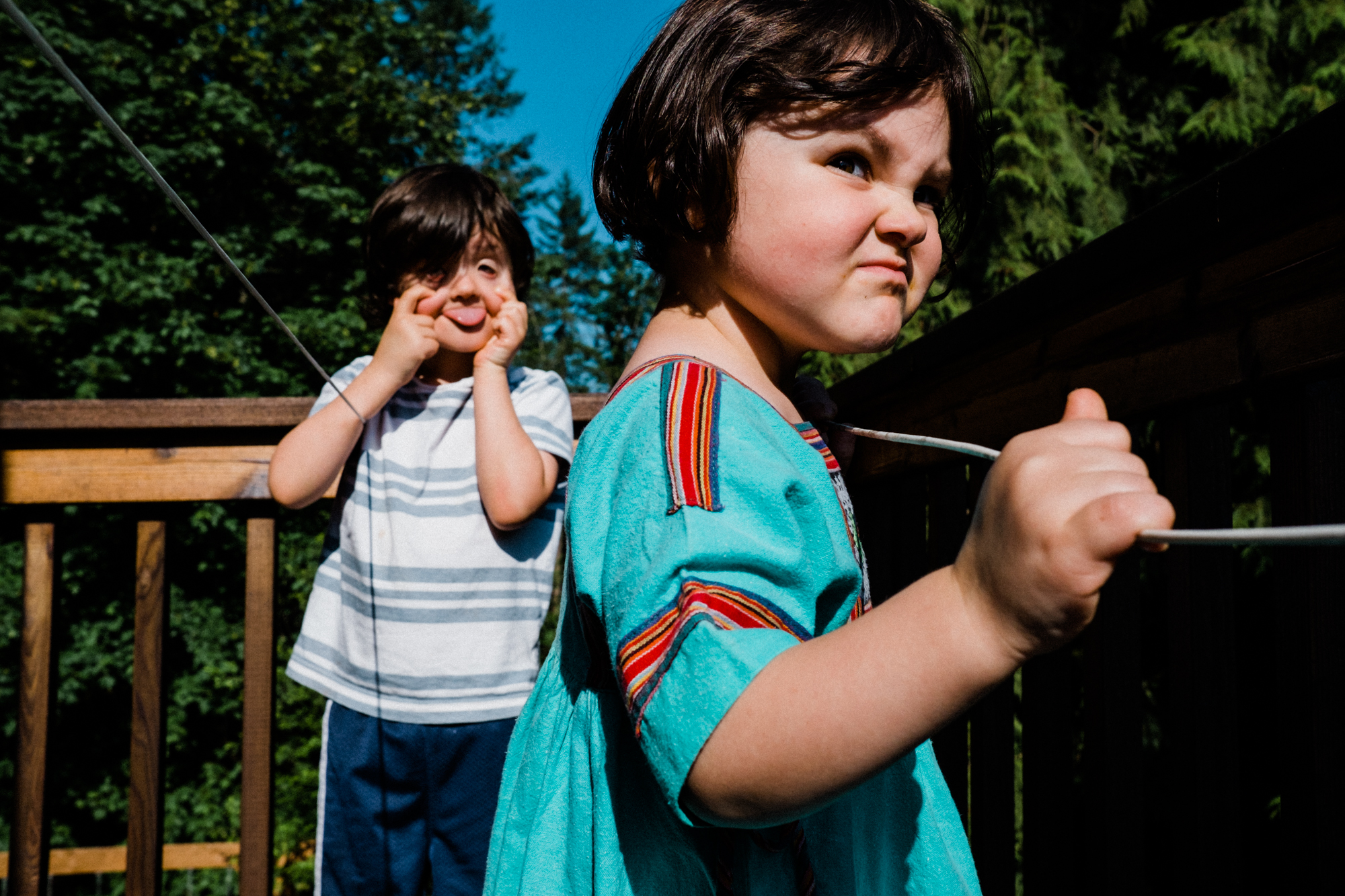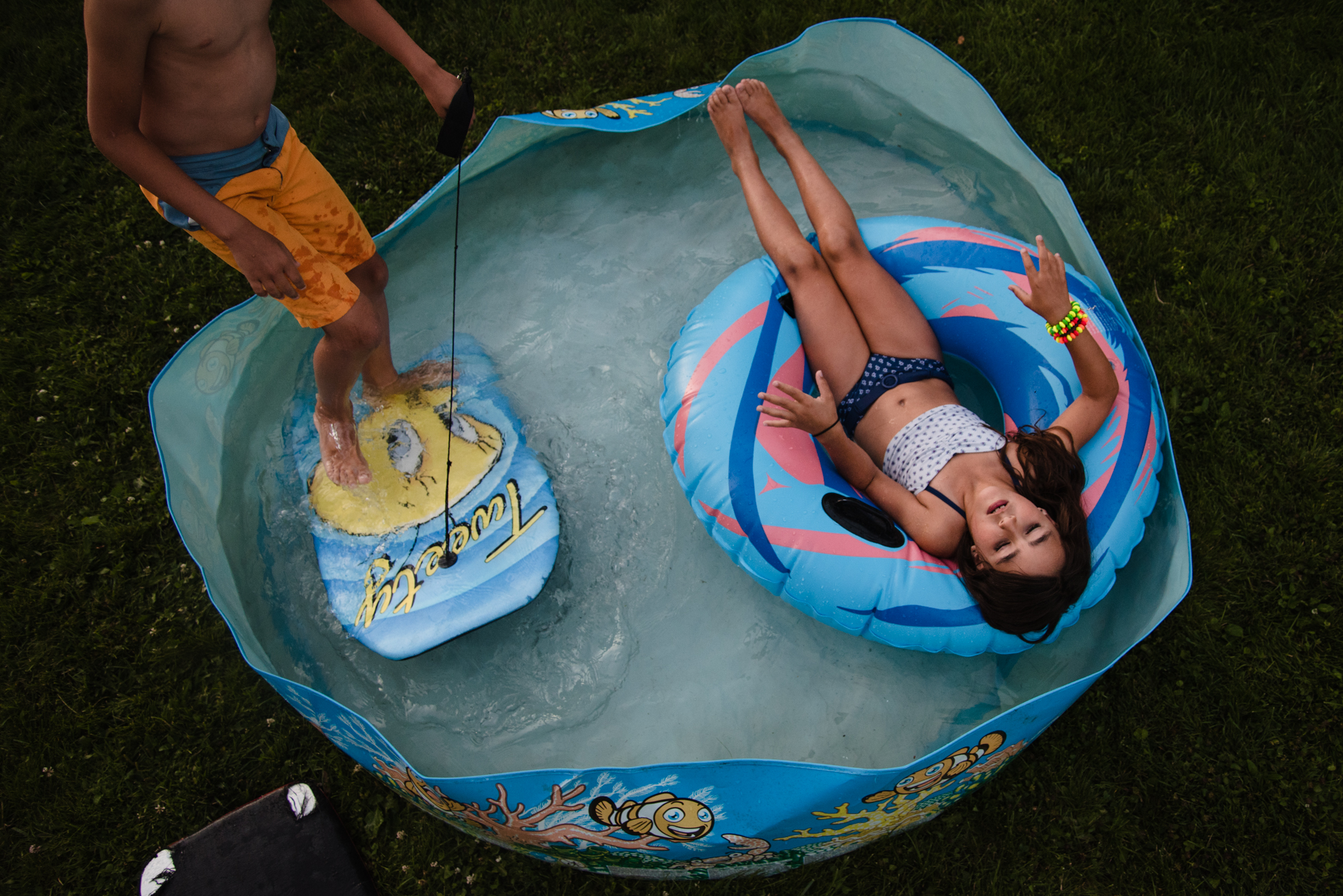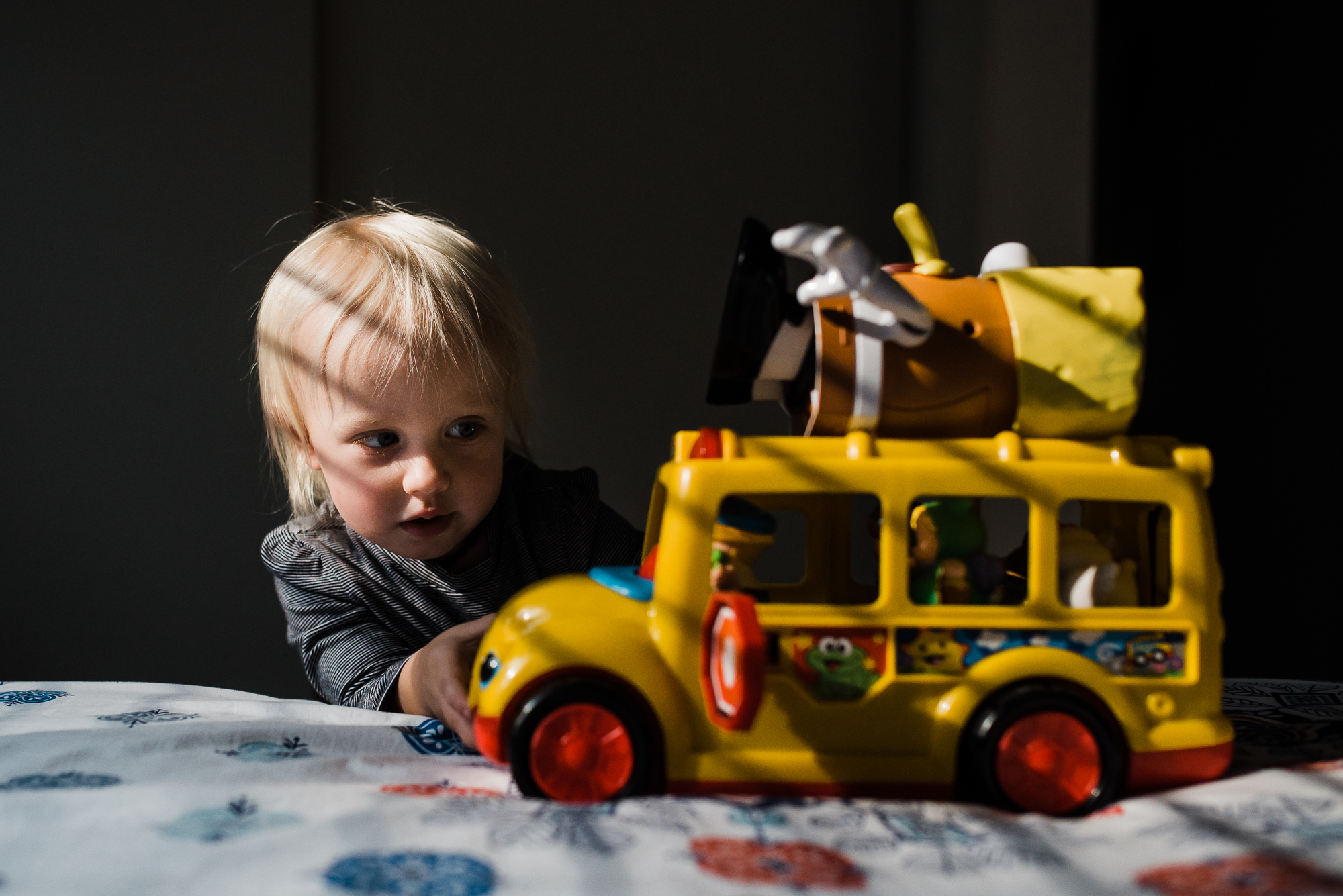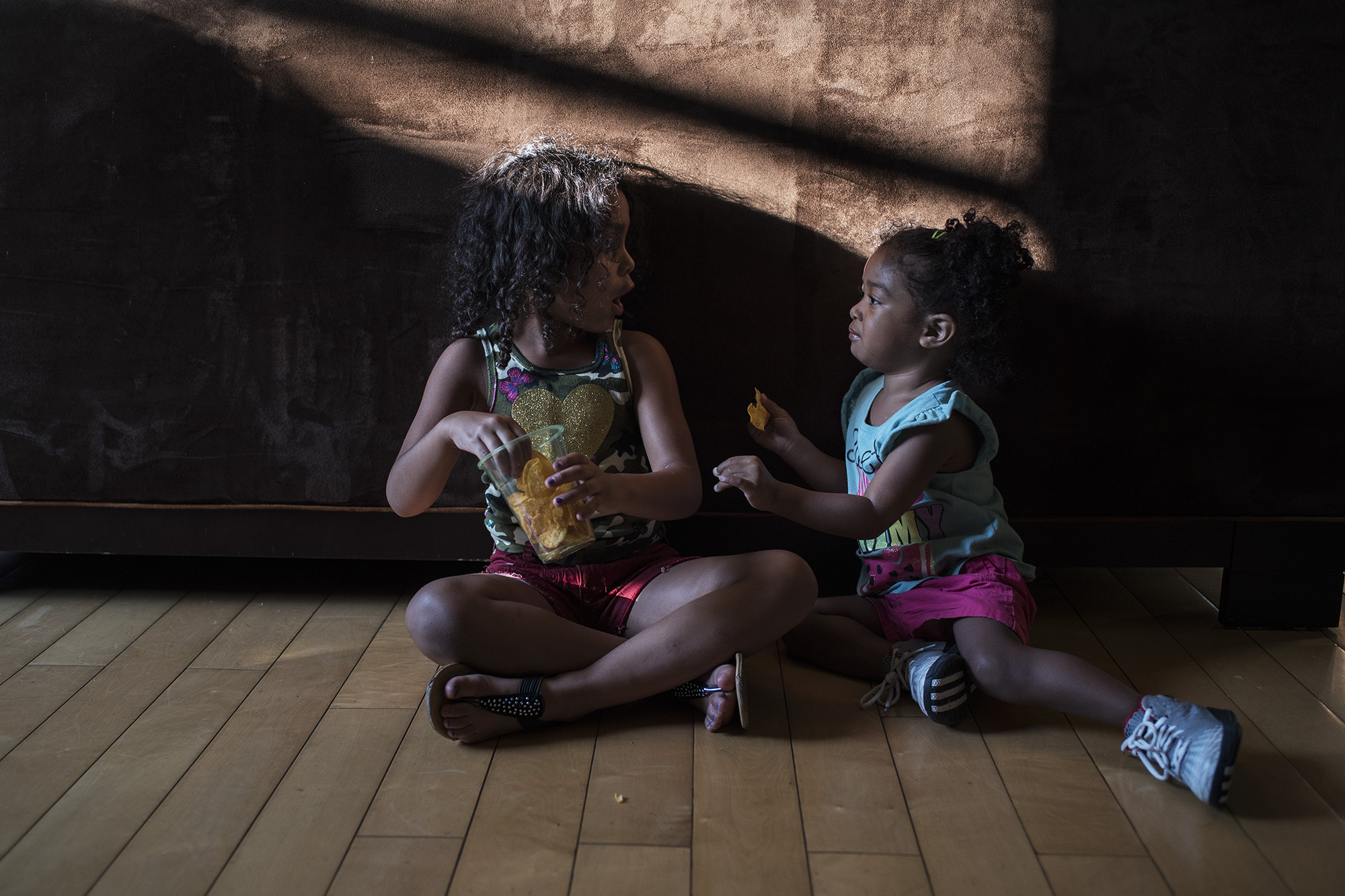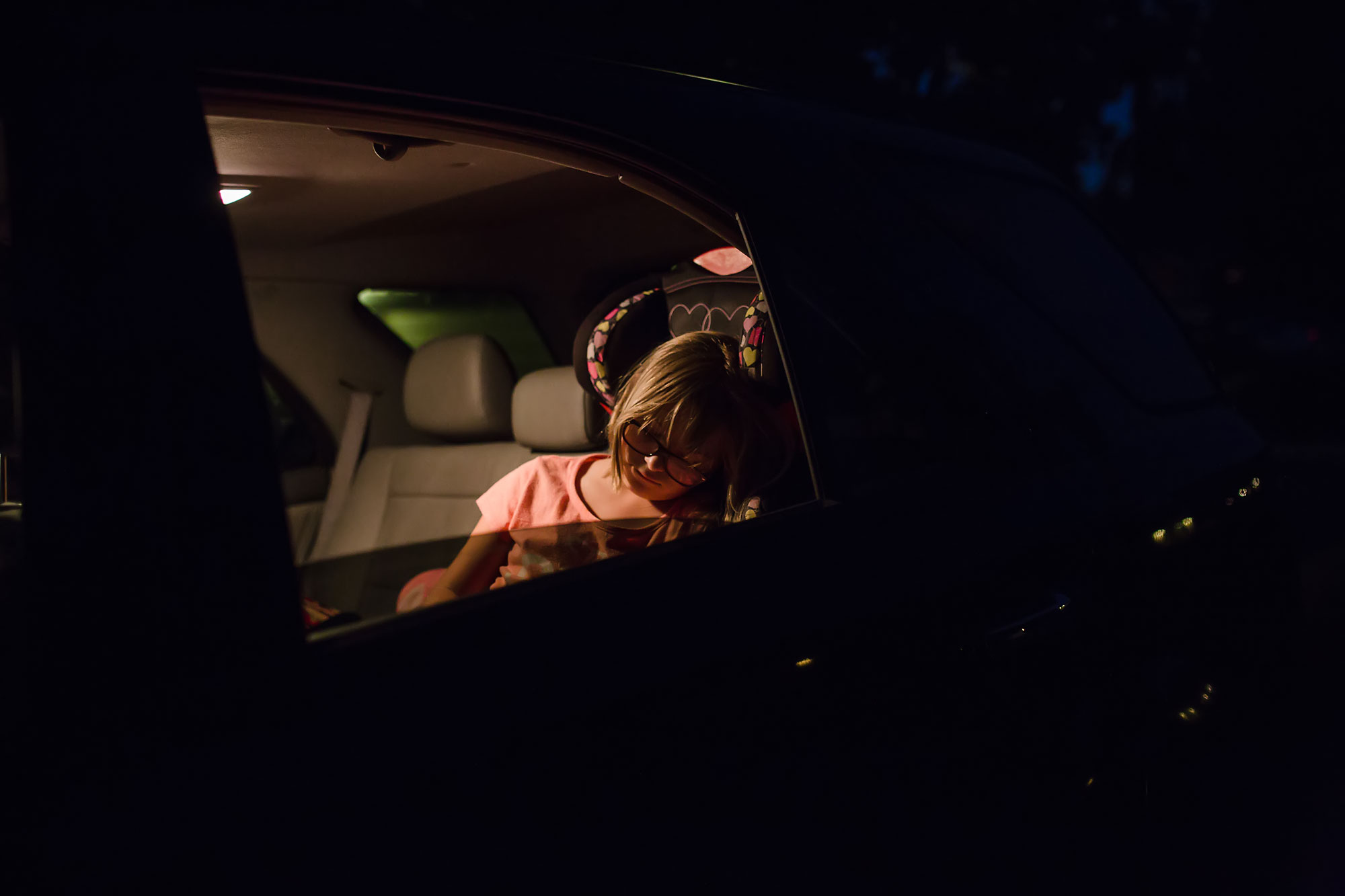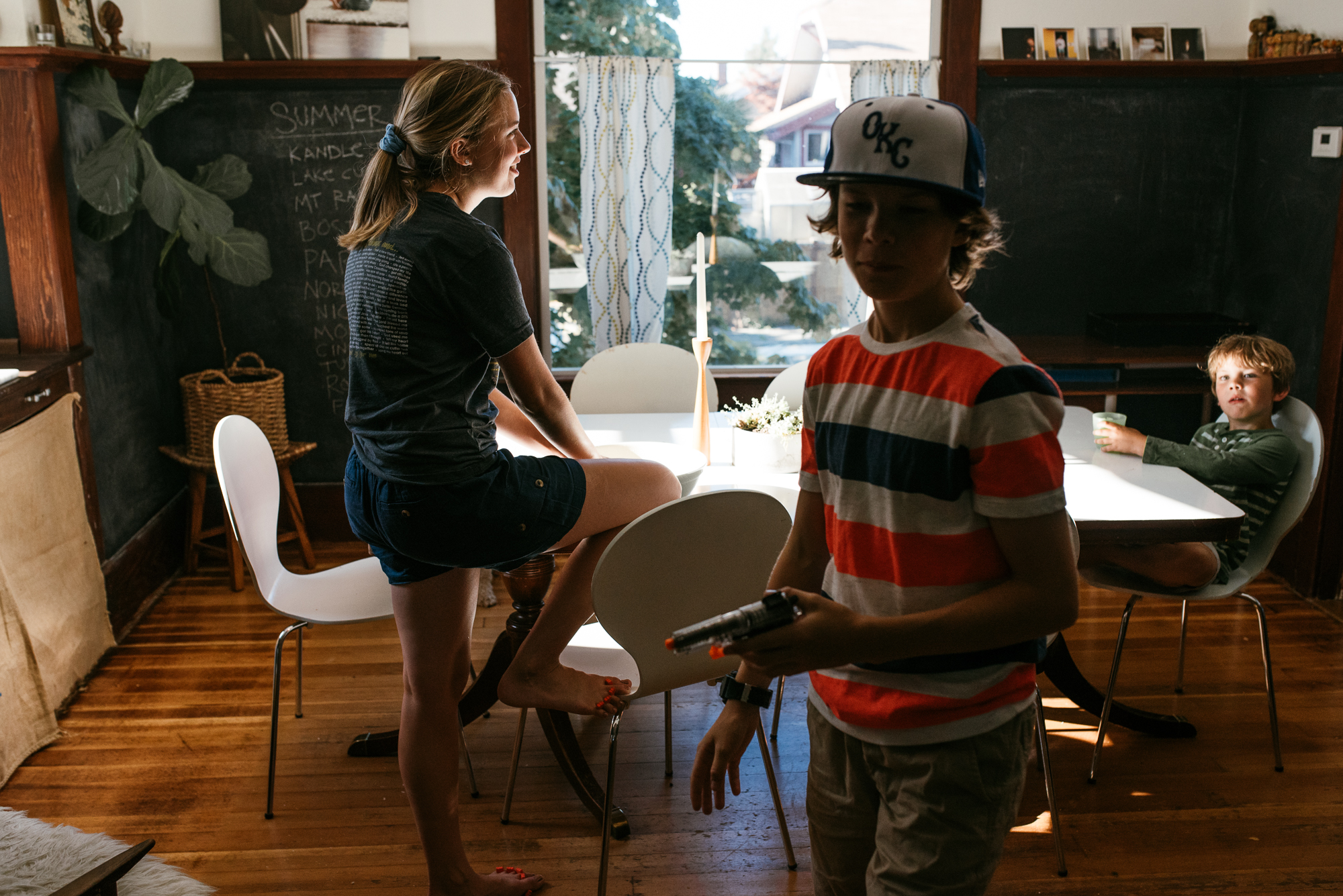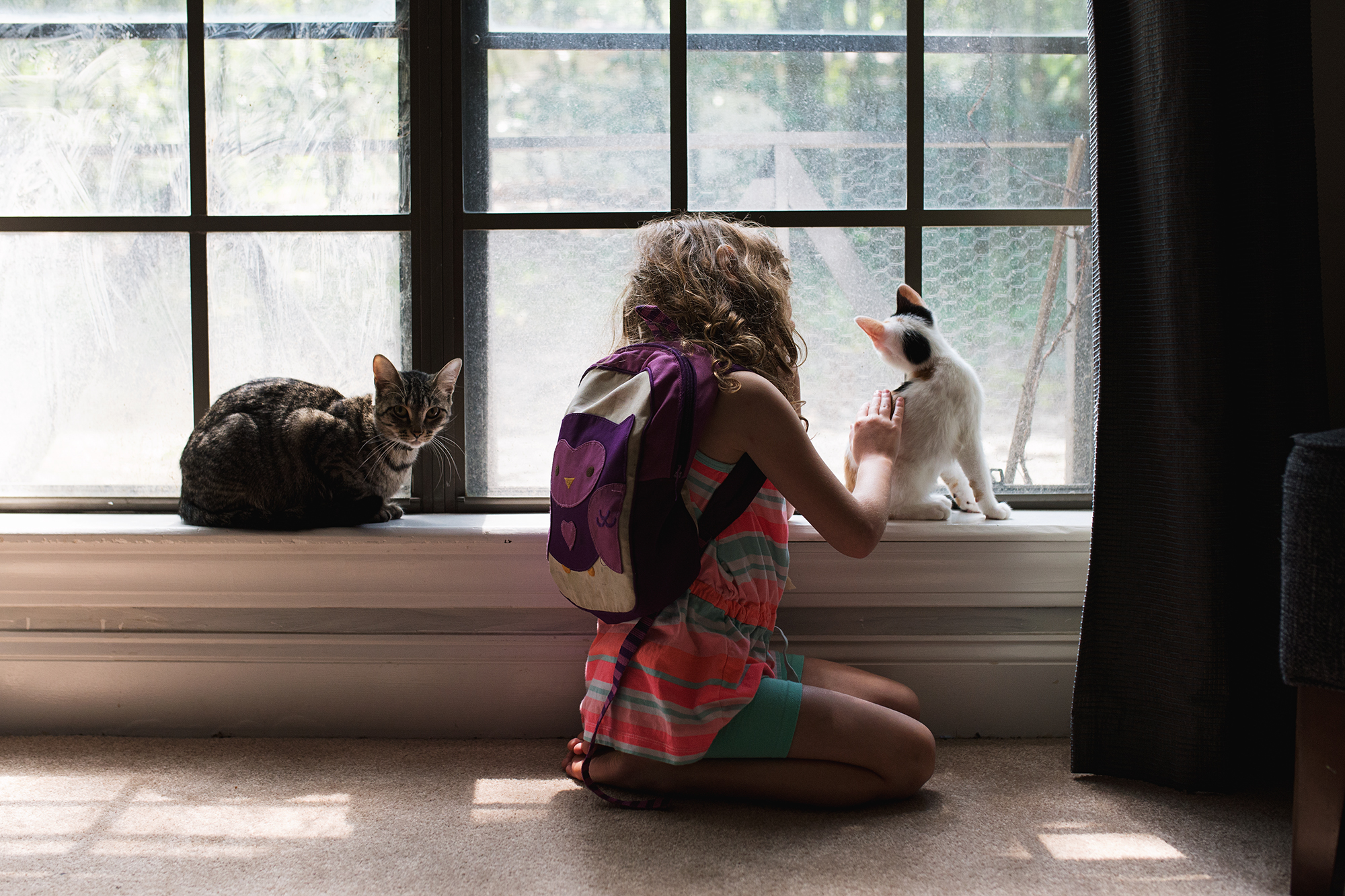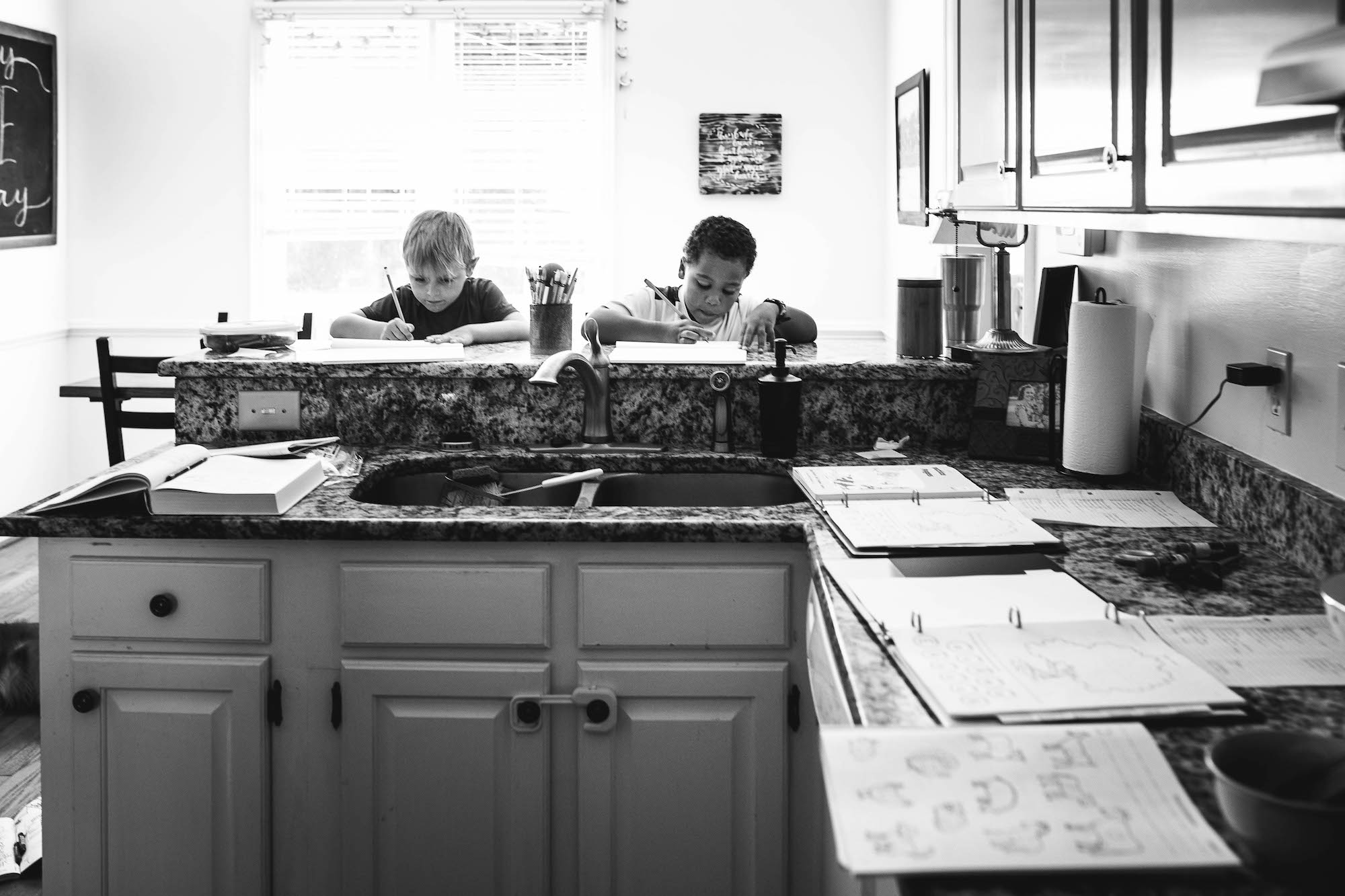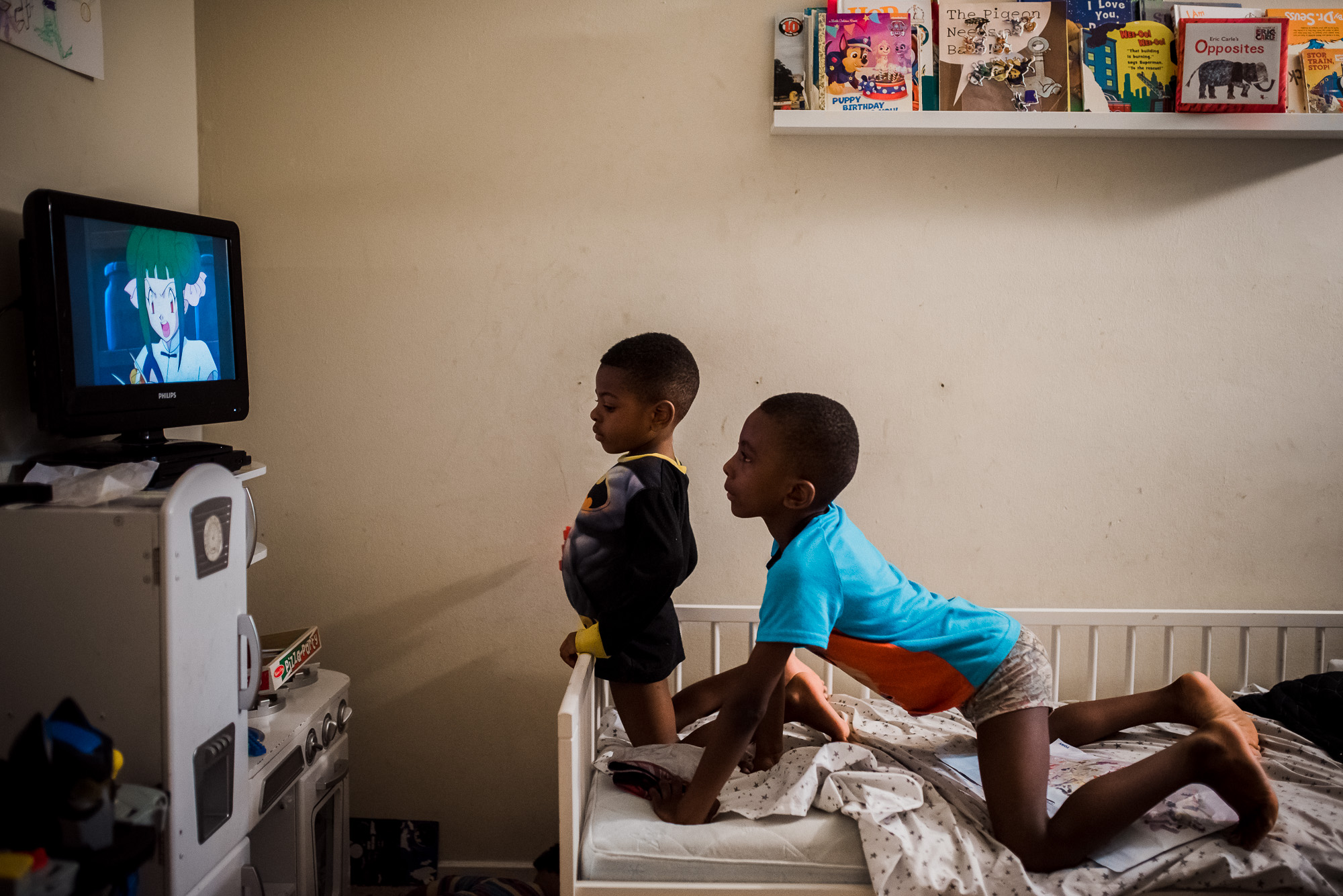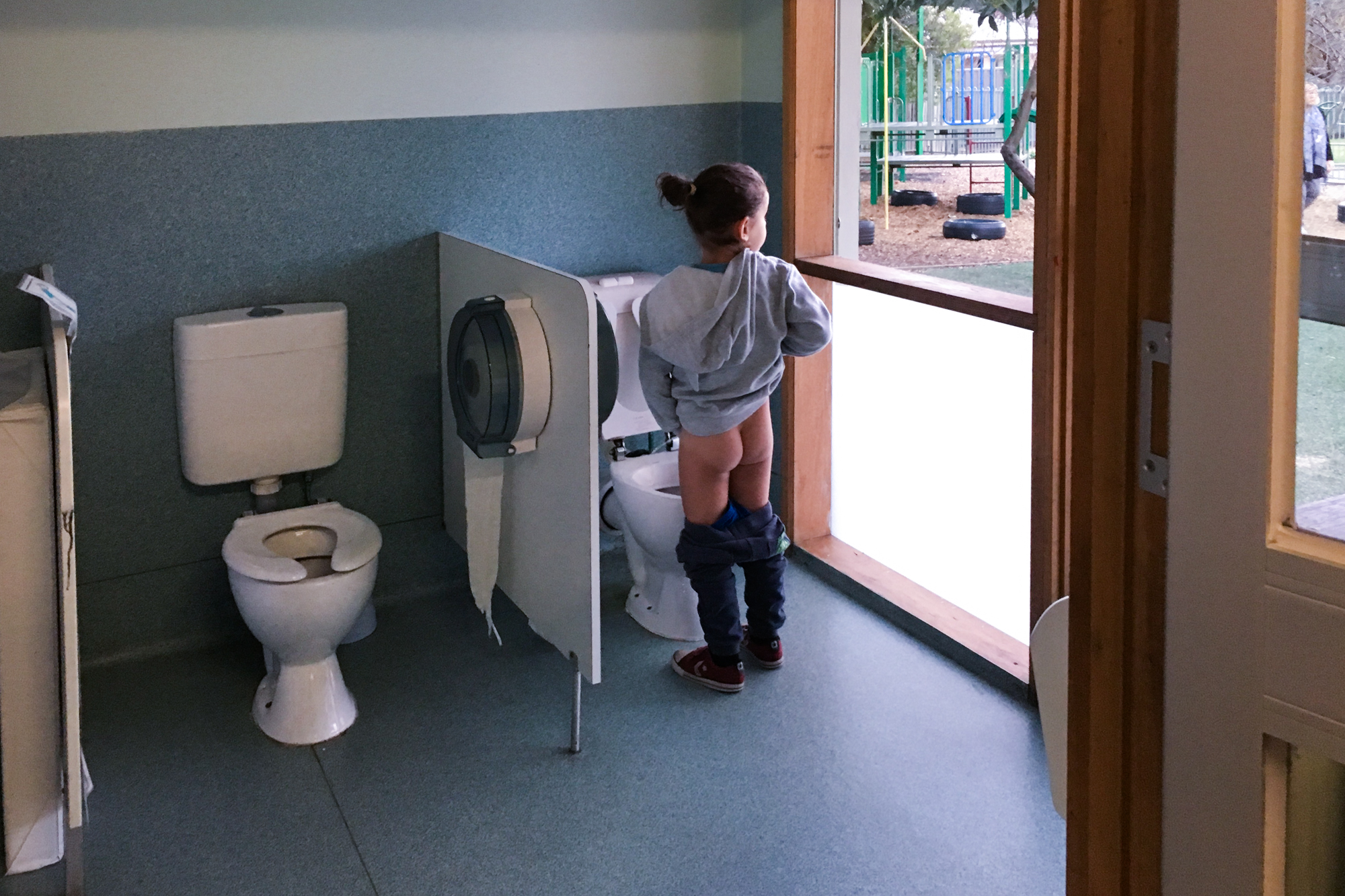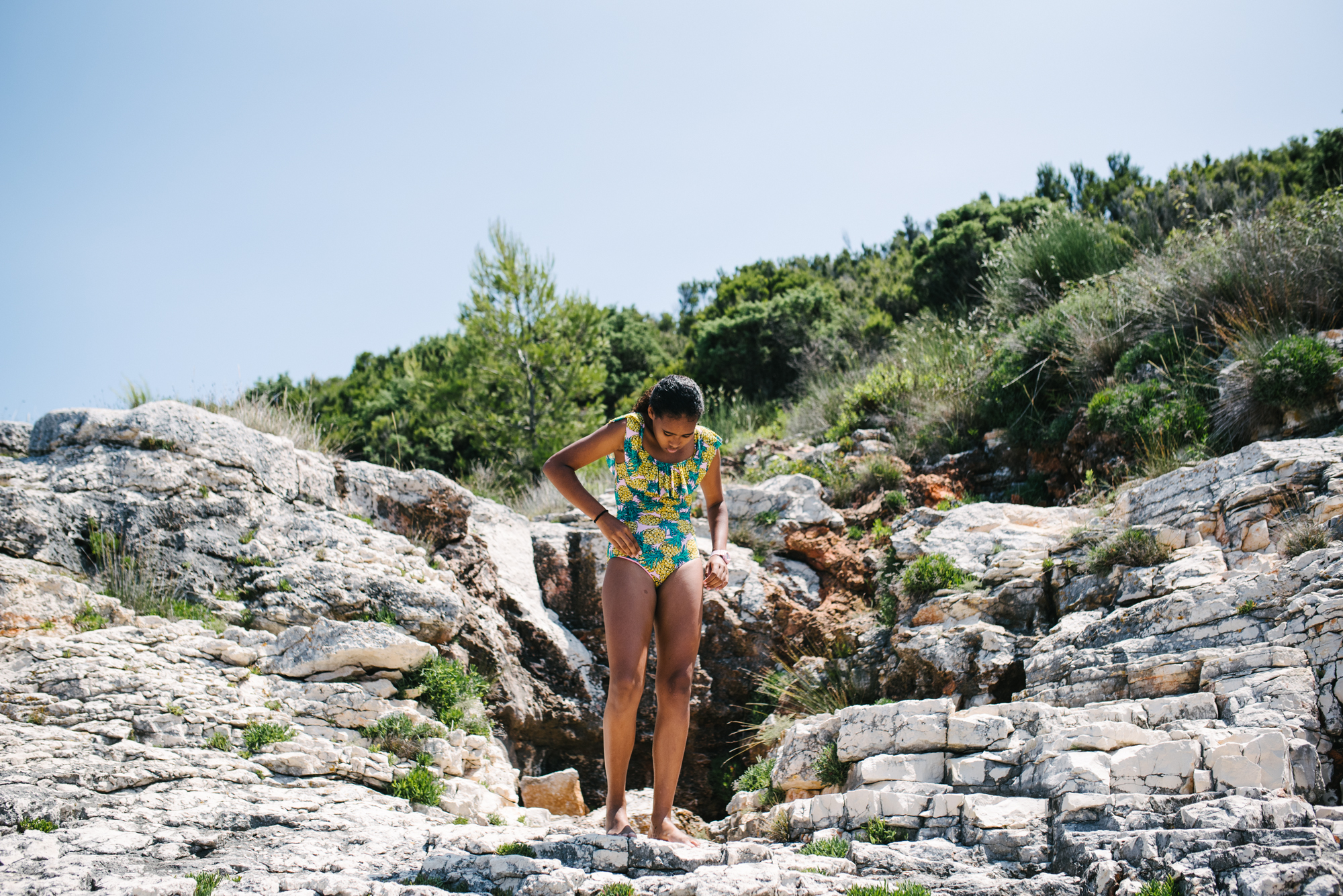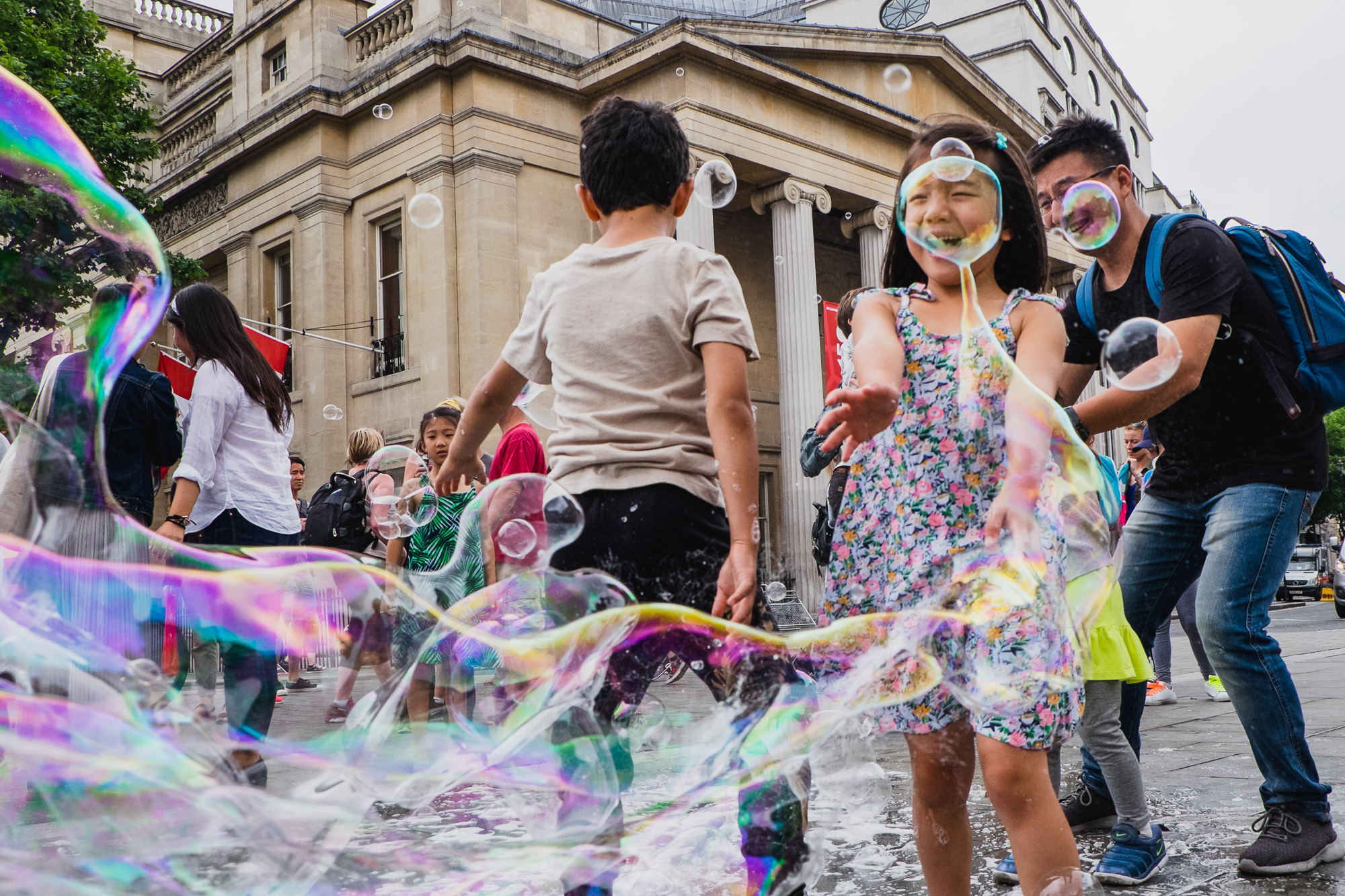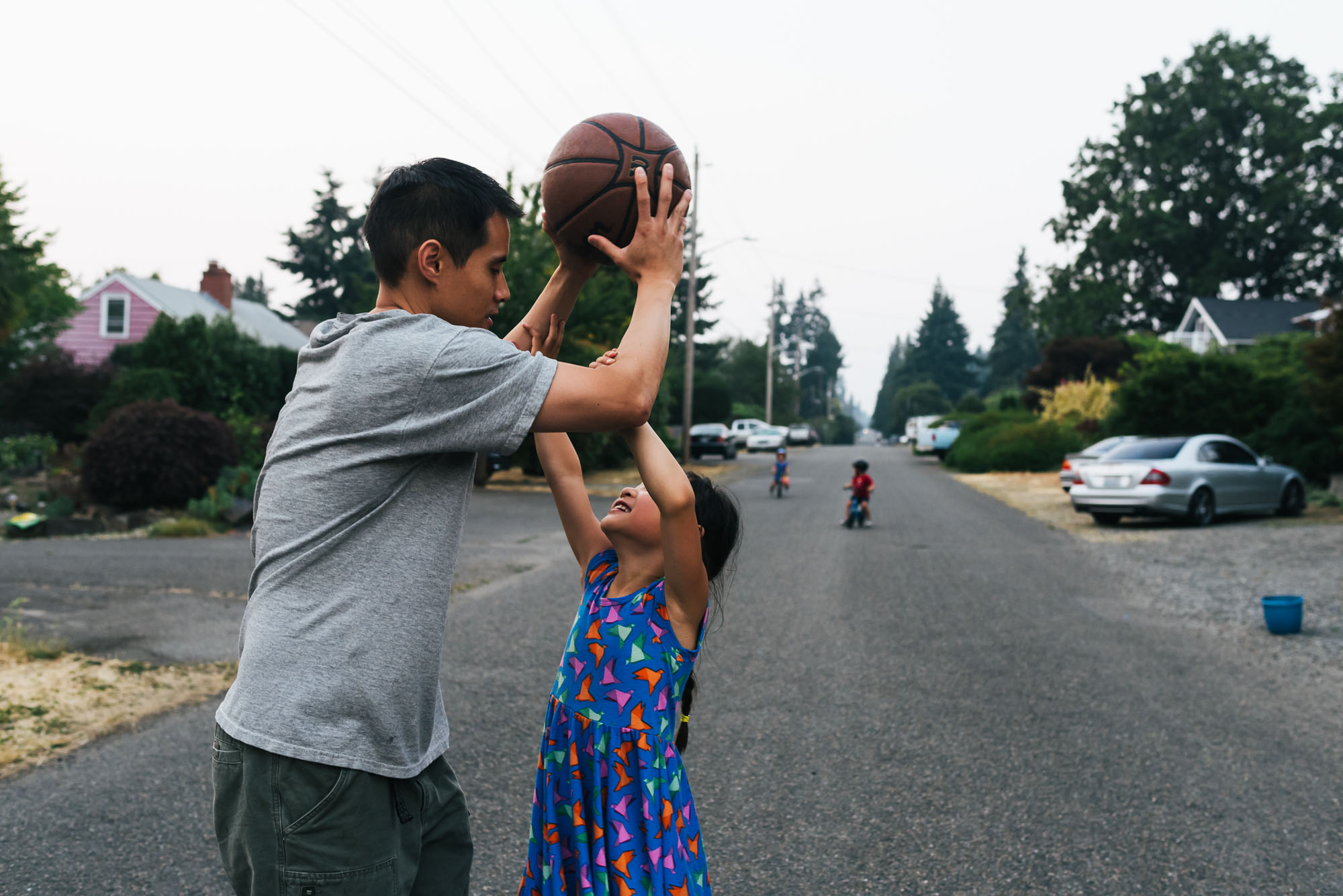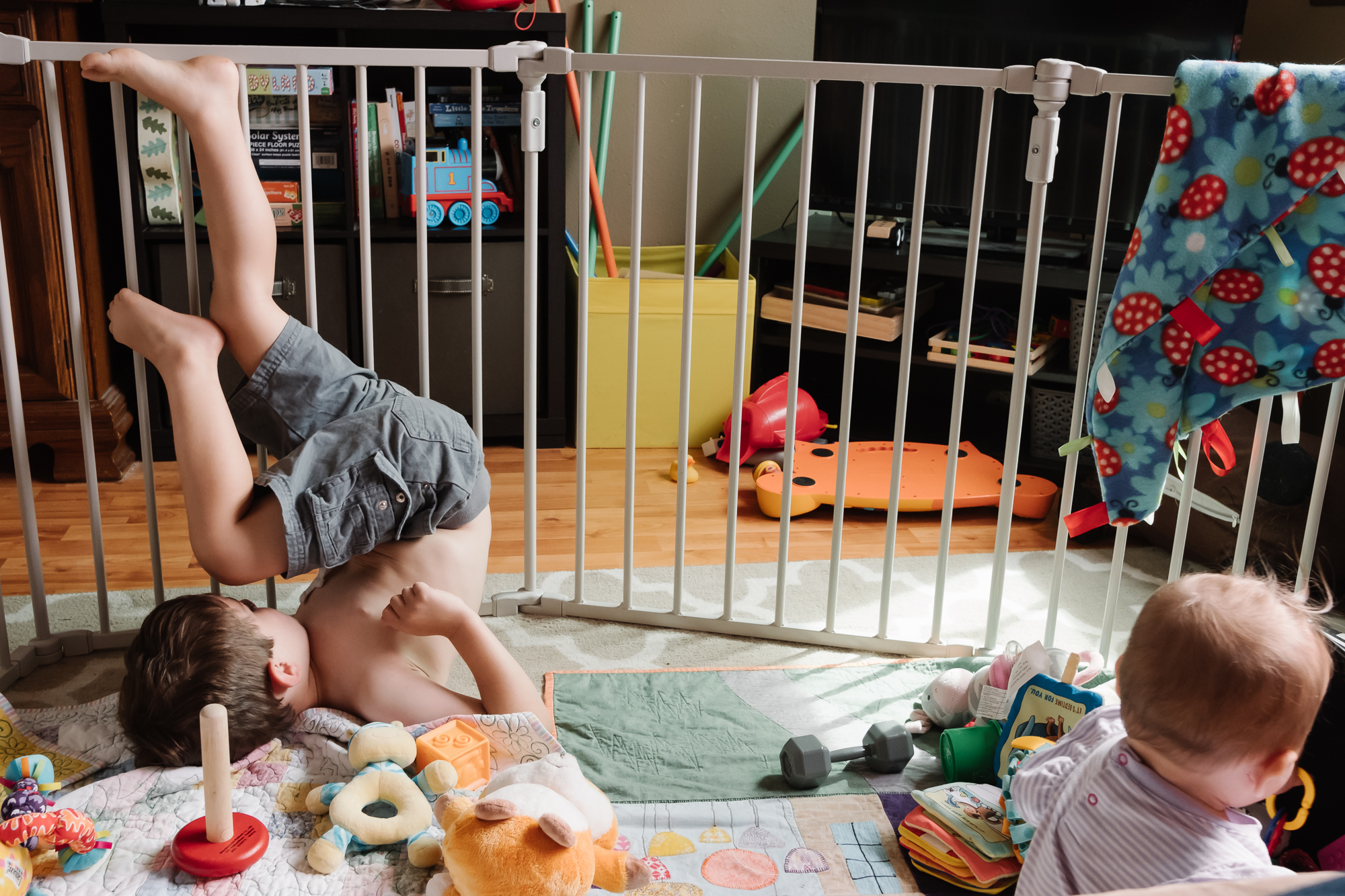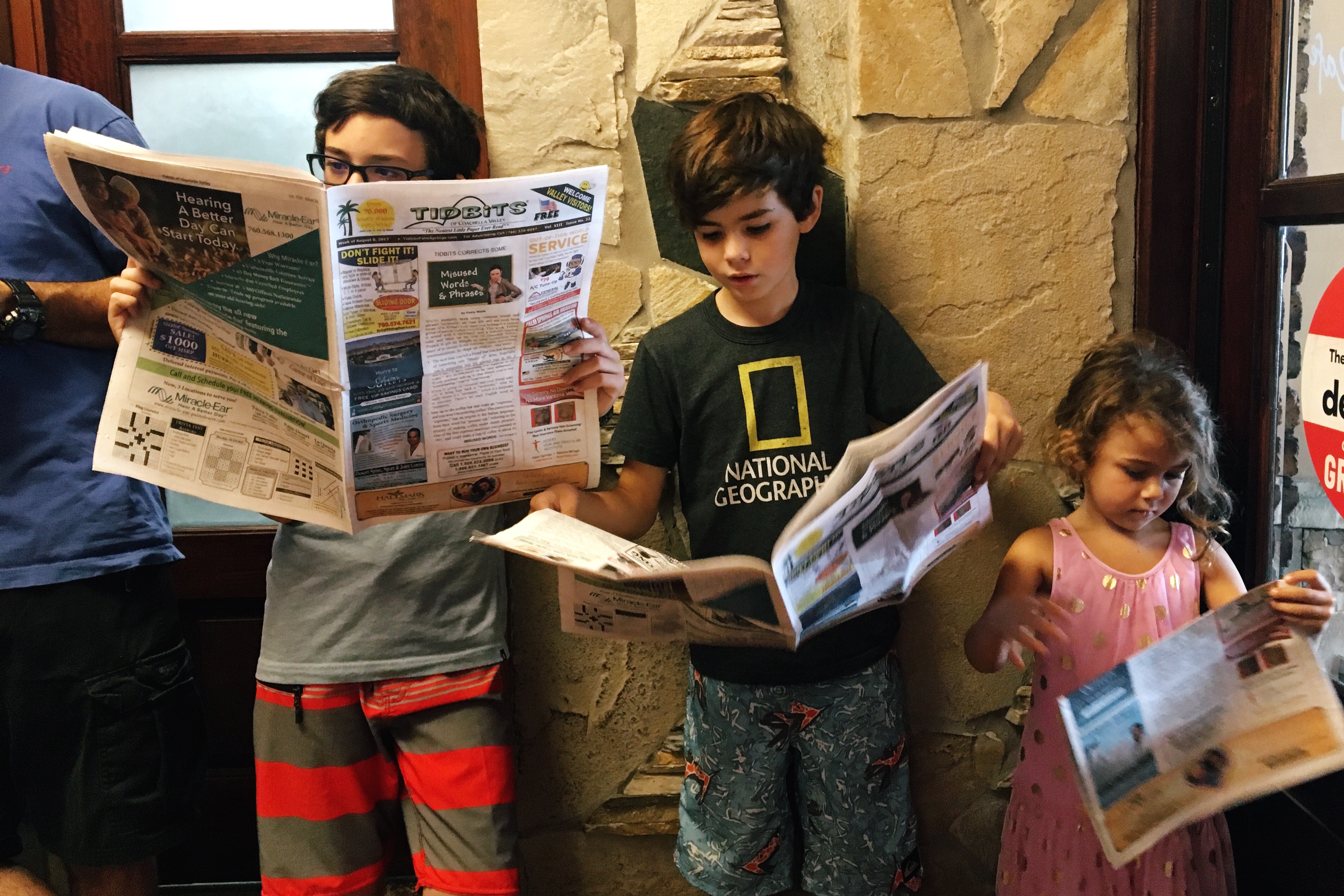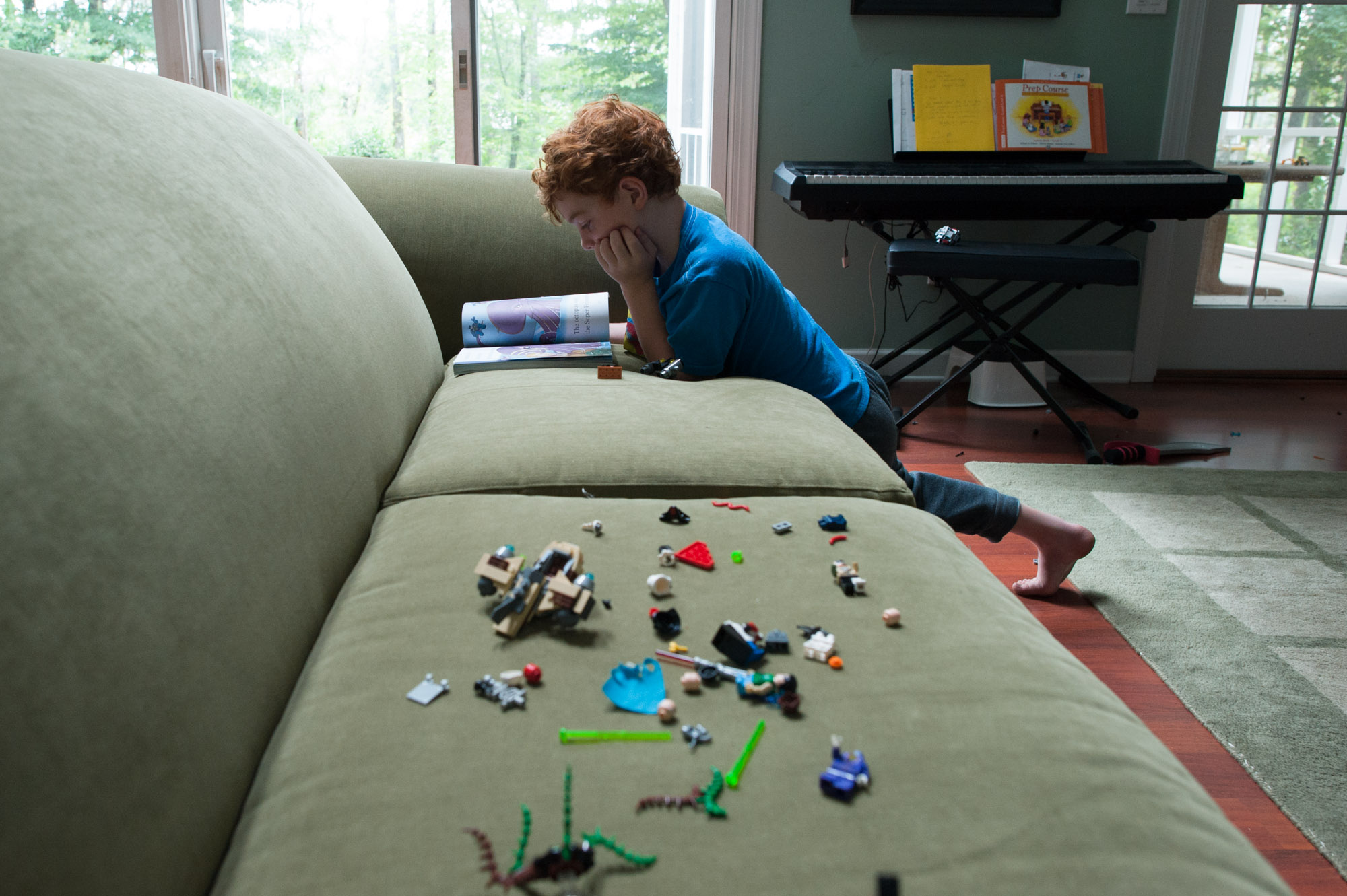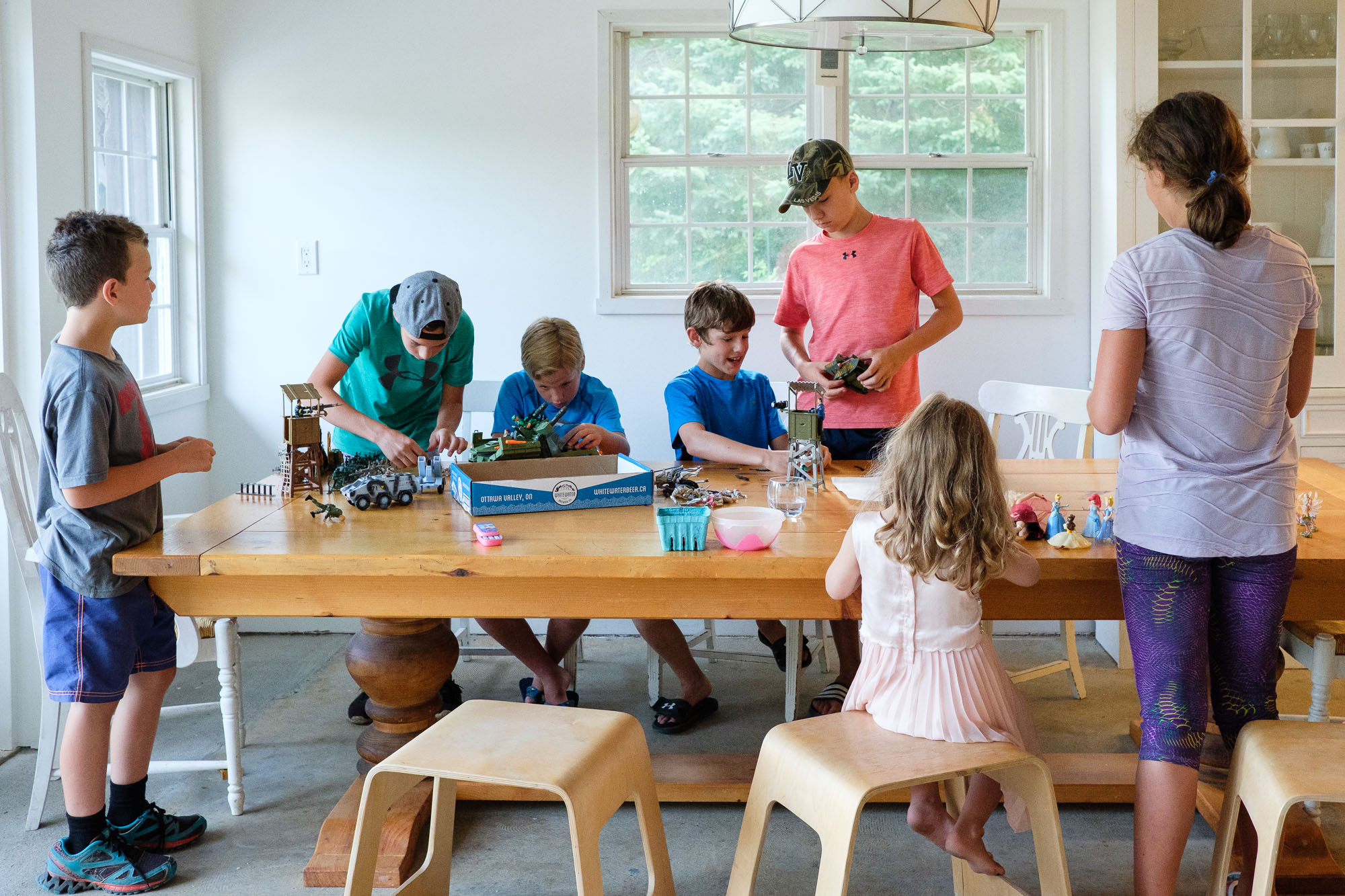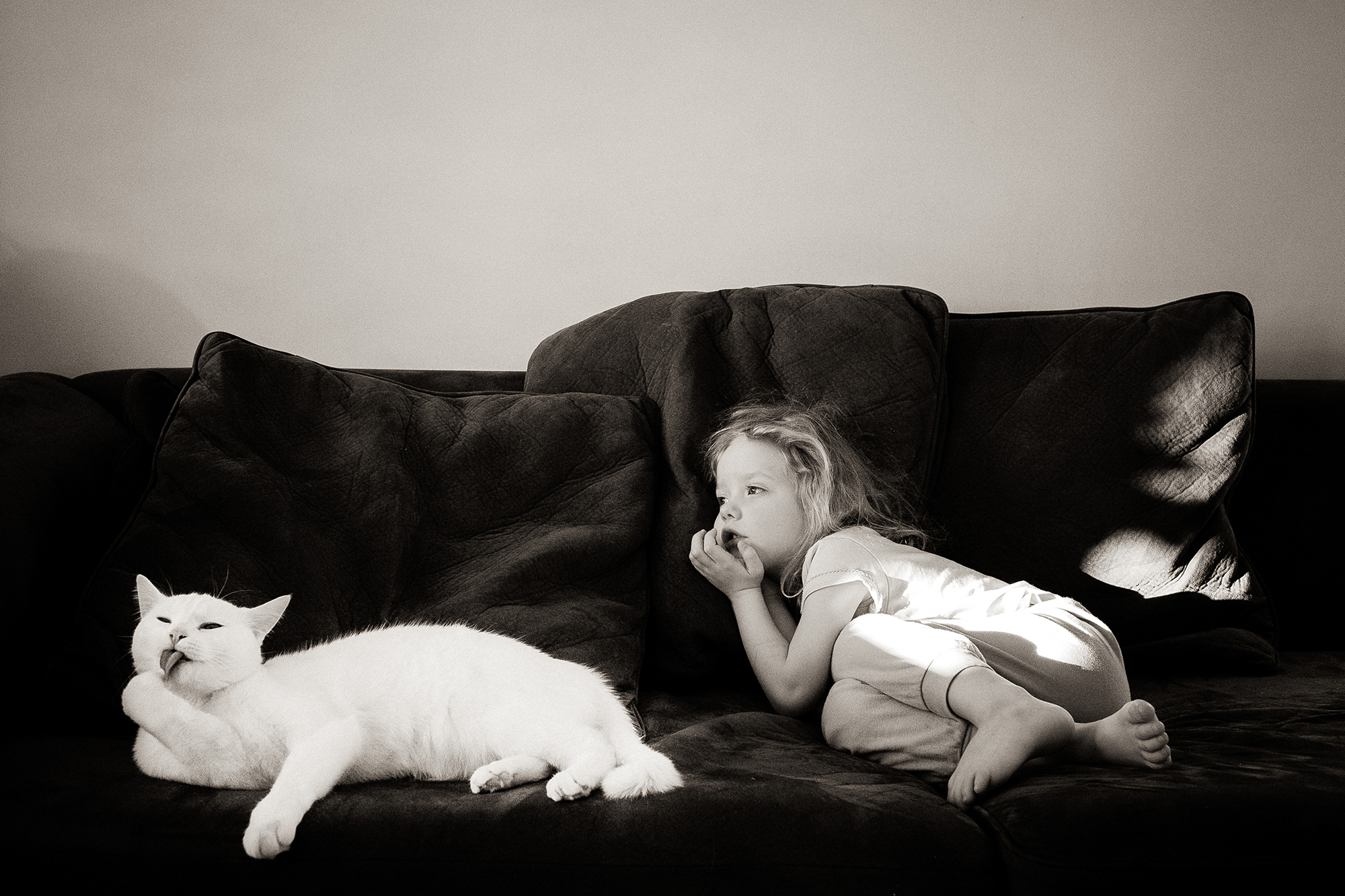Angela Douglas is a mom of four and a documentary photographer in Virginia who is in the middle of her second 365. You can find more of her work at her website, Facebook, and Instagram. Here is what she had to say to our contributors:
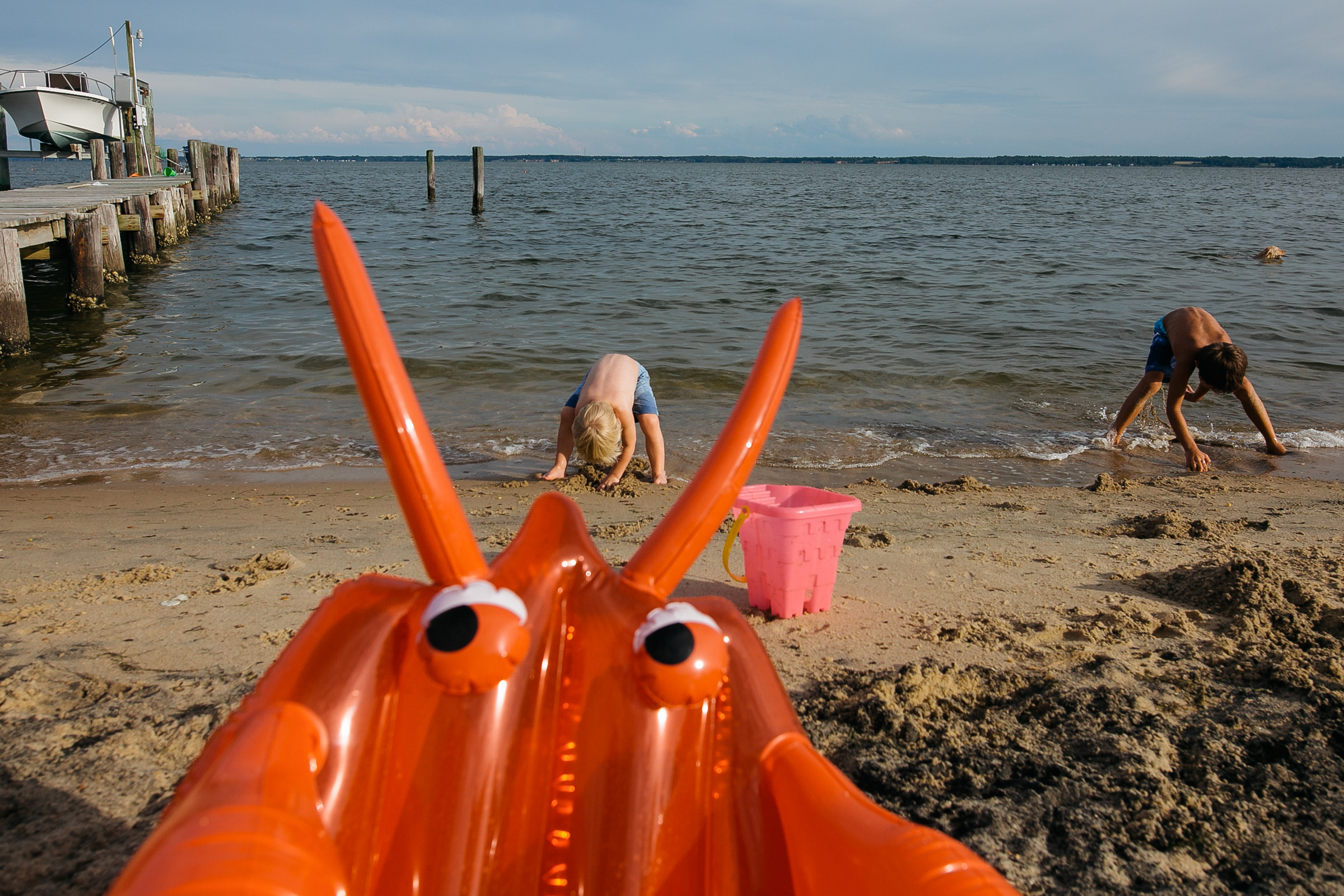
Jenny: I love your images! And your compositions are incredible! There is so much happening in all of your images with your amazing use of layering. It certainly doesn’t seem to be chance, so do you set out to capture layers in your frame and just wait for the right moment when everything comes together? Do you have any advice in using layers?
First off, thank you so much for the compliment. Both my husband and I come from large families so I’ve really been forced to learn how to shoot with lots of layers and complex compositions. I find that I’m drawn to the chaos of that though. Once I learned how to utilize micro-composition in my photography (from a class at Clickin Moms), I started using that technique much more often in my images. I find myself hanging out where the scene seems to flow the best and waiting for that perfect shot. My advice to you all would to be patient and shoot a lot more often. The more shots taken, then better your chances are of that one perfect image.
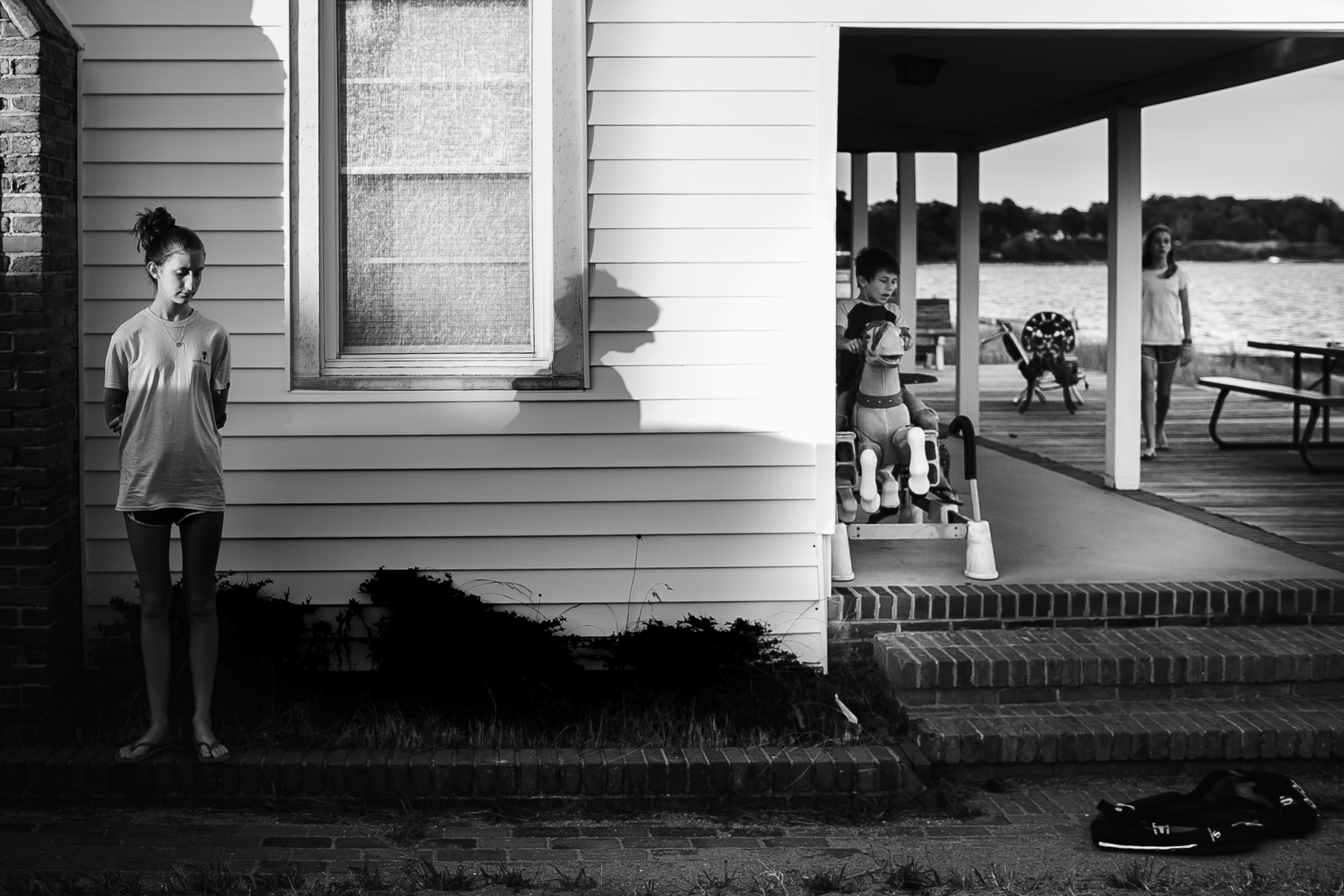
Jessica: You do a fantastic job of capturing your family life and the feeling of your kids’ childhood. Having four kids myself and three of them being teenagers, my shooting of them has changed. Do you find that your kids’ attitude about you making pictures of them has changed at all? Do they mind you documenting their lives? How do you respect their privacy and still follow your heart (and eye) as an artist?
At the moment, the only child of mine who gets upset and sometimes asks me not to post something on InstaGram or Facebook is my 7-year-old son. My daughters really don’t seem to mind at all, I guess you can say they are well adjusted to being behind the lens. I do my best to stay cognizant of the fact that my older girls are on Instagram and I wouldn’t want them to feel embarrassed about something I posted. I sometimes will ask them if they approve of me posting before doing so. And I do still make it a point to photograph them when they’re upset or displaying their quirky habits, I just choose not to post those ones for the world to see. There has to be some privacy, right?
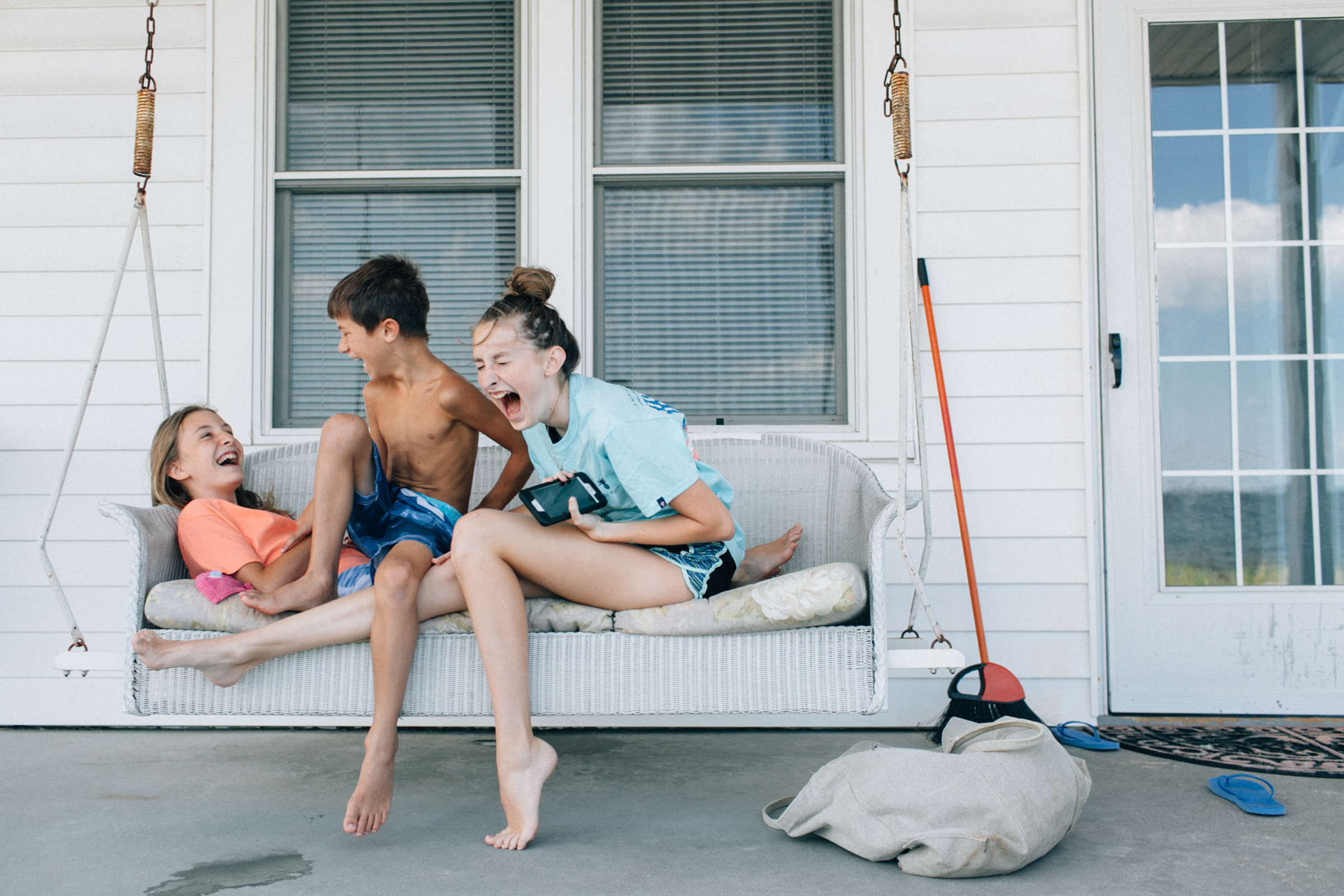
Gemma: There is so much quirkiness and personality jumping out of your images! I love how you have honed into the feeling of the moment and representing the characteristics of each person over all else in each frame. Is there something that has helped you develop this style as you approach a scene? Any tips you have learned along the way to achieve this level of authenticity with your older children?
I love to find the humor in our everyday lives. The normal day to day activities. When the kids spill milk all over the dining room table, instead of getting mad or upset, we laugh a little then clean it up. I do my best not to sweat the small stuff. I feel very fortunate to have children who are very comfortable in their skin and are not afraid to be goofy. They help me create these images by having these larger than life personalities. My older girls have grown up in front of a camera and don’t seem to mind being photographed all the time, although I keep waiting for the day when they finally decide they’ve had enough and fuss at me about it.
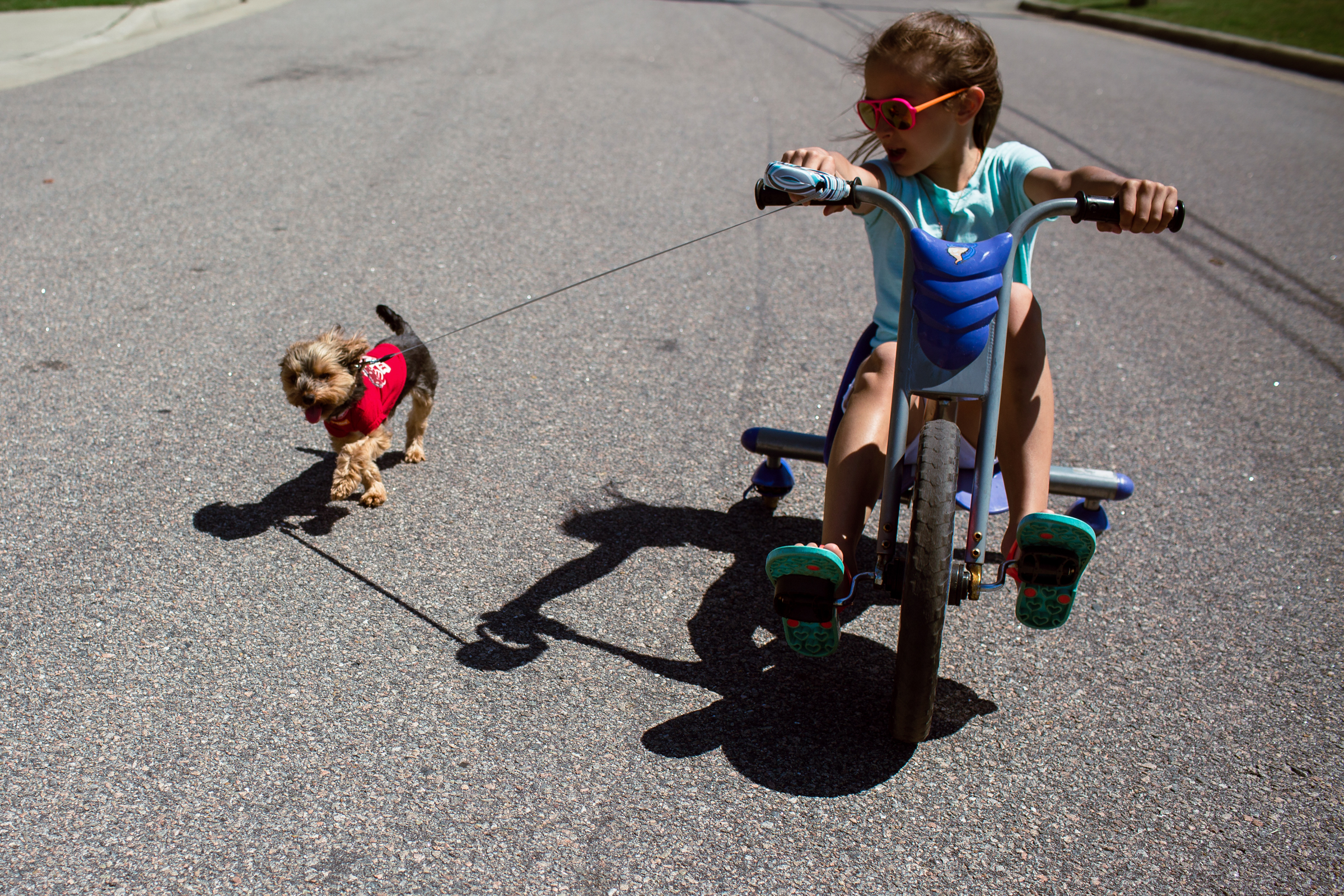
Meg: Your photos seem to tell the story of the love your family shares. Do you feel like your kids are able to see that in your photos? What do you think is your biggest reason you take these types of photos of your family?
I hope they can. I want my children to not only see the love I have for them but the love they have for each other when they look back through our annual family albums we create. My biggest reason for doing what I do is the memories, I get to capture all these memories of my children growing up that I can look back on and they will be able to look back on as well. Growing up, I was always that child that loved to look through old photo albums….wondering about the families in the pictures and what their stories were like.
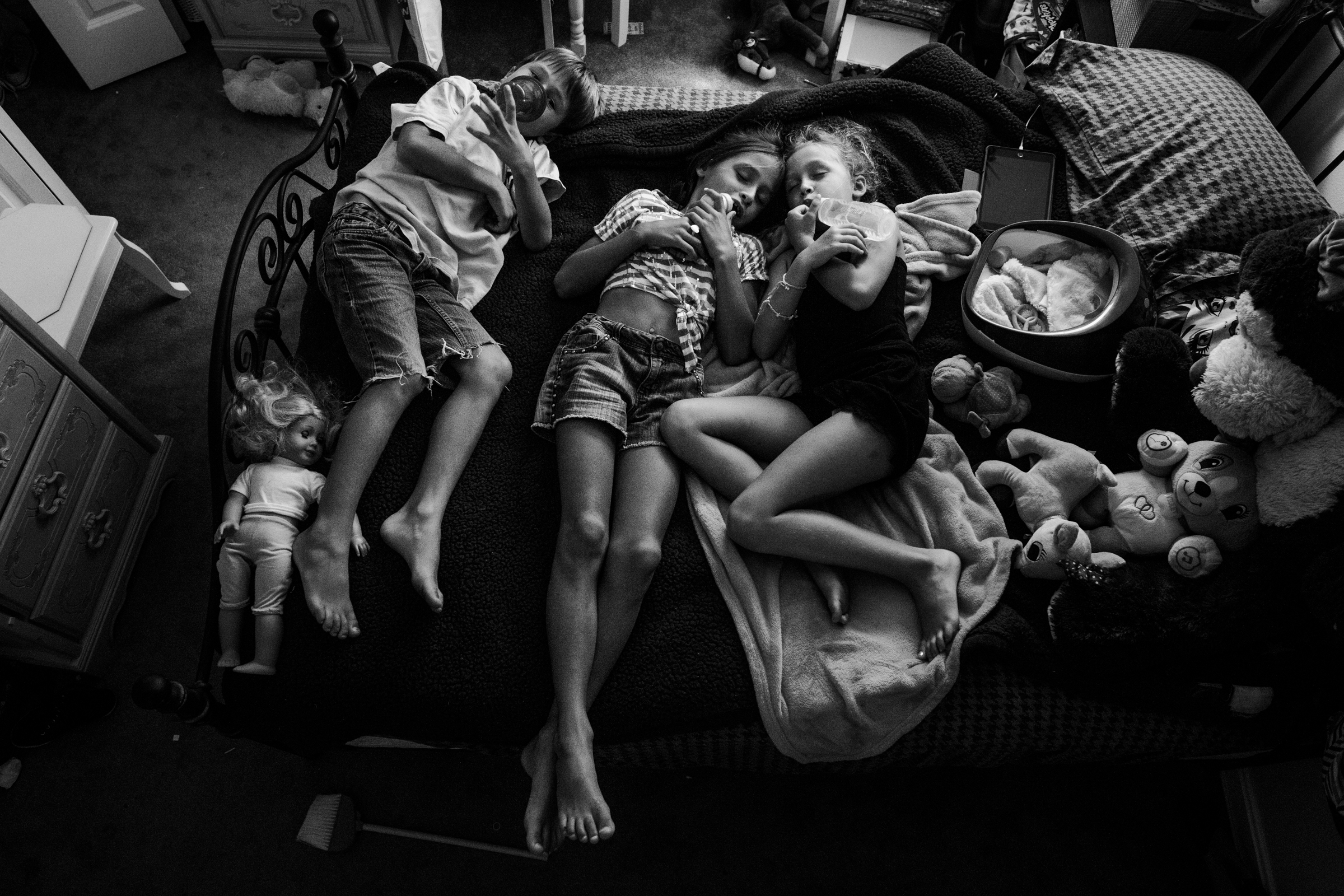
Kym: You capture such great action; how many frames do you tend to take before you get THE ONE?
Some days it feels like I’m taking thousands and thousands. For example, this week we’ve been camping and some of the days I have 300 frames and others, I actually do have around 1,000. I shoot so much that I recently had to get the shutter replaced in my camera. I told you, the more you take the better.
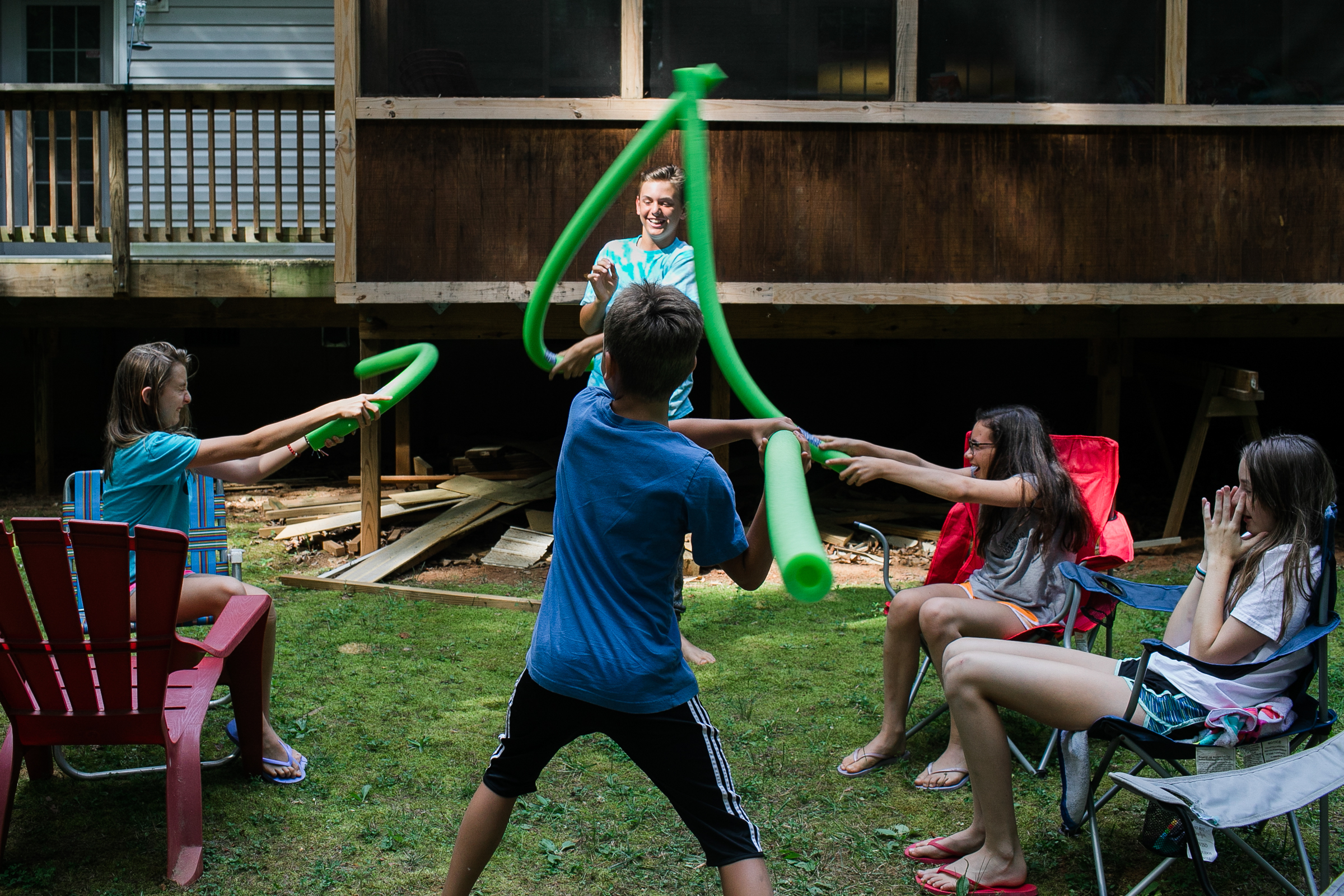
Robin: Since this is your second 365, do you find yourself shooting differently than from your first 365?
Definitely. This time around I am more relaxed about it. With shooting a 365, I’ve realized somedays I feel more inspired and others not so much, so if I miss a day, I don’t let myself feel guilty for it. Right now I am also doing a monthly Day in the Life, so sometimes I take a break the day after so I don’t feel burnt out. The camera and I need a breather too sometimes.
I also consider my street photography as a part of my 365 where as before, I had rules in place for it, that family was all that I was allowed to shoot. I’m learning to let go and not sweating the small stuff.
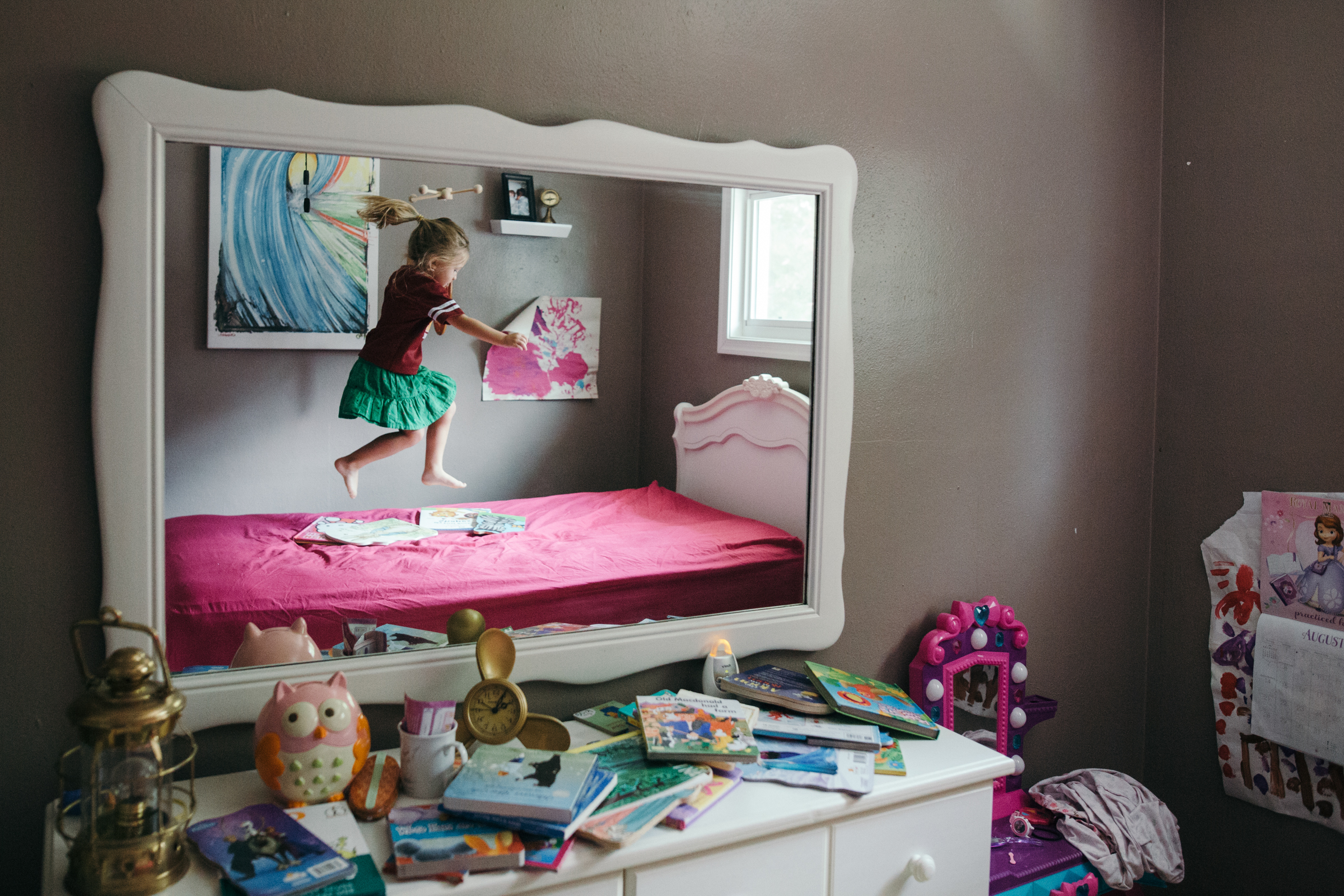
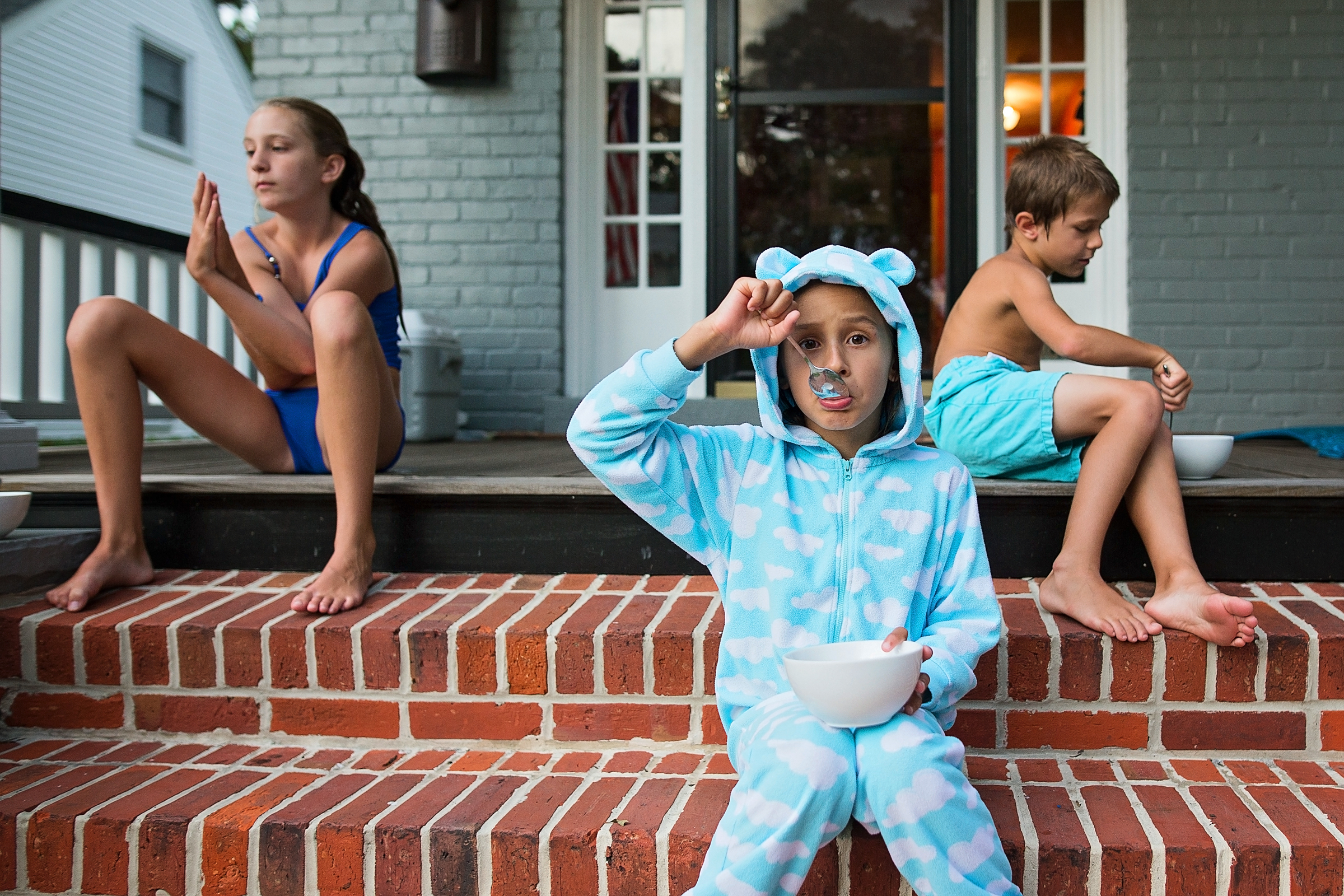
*****
Want information on how you can be a featured artist? Check out our submission page for all the details.
